The boots we’ve put to the test for this review are suitable for use outside of the winter months, in more benign weather.
None of them are designed to be used in winter conditions, when snow and ice prevail on the hills.
They range from footwear best suited to moderate walks on trails, footpaths and lower fells, up to some that are at home on the highest Lake District mountains or Scottish munros.
For many people these will be the boots of choice. If your walking is mainly confined to maintained paths and low-level walks, you’ll want footwear that’s, above all, comfortable and will keep your feet dry and warm.
If you’re embarking on a long-distance route, or a multi-day expedition, you’ll need boots that will still be comfortable at the end of the walk.
There was a time when buying a new pair of boots meant weeks or even months breaking them in. Thankfully, that’s seldom the case now, and we tested the boots straight out of the box with no appreciable comfort problems from any of them.
The modern trend is to provide more underfoot cushioning too; important if you’re on hard surfaces and trails, though you also need good stability from the boot on more technical ground.
Another choice is whether to choose leather or fabric as the material for the uppers. We tested models that use either of these or, in some cases, a combination of the two. Leather will tend have its own water-resistant properties whereas fabric boots rely mainly on a thin waterproof membrane inside the uppers to keep water out. The former tend to be warmer than the latter too; good in cooler weather but if you’re heading somewhere warm you might steer towards a cool performer.
We tested a dozen models on a variety of terrain, and evaluated them for how well they performed for stability and grip; how comfortable they were overall; whether they were suitable for a variety of uses; their quality and overall value for money.
As with all footwear reviews, it’s important to try on the boots to see if they suit your anatomy.
AKU Trekker Lite III GTX
Price: £169.95
Country of manufacture: Romania
Weight: 1,350g a pair
Colour: black/grey/green
Construction: suede/PU film
Waterproofing: Gore-Tex Performance Comfort
Sole stiffness: 8/10
Women’s version: yes
Sizes: men’s 6-13; women’s 3-9
This third version of AKU’s award-winning Trekker Lite is new this season.
The uppers are made from a combination of suede and AKU’s Air 8000 welded polyurethane film, which is designed to offer optimum breathability on warm days. The mark III version features a little more Air 8000 and a little less suede.
The lower section of the boot is composed of the suede, which effectively forms the rand, with a hardened toe box and heel cup offering good protection against knocks and rocks. The upper section is the tough-feeling polyurethane material, with a well padded tongue and ankle cuff, both of which have ventilation perforations.
The lacing is in two parts. The lower section has a pair of webbing loops and then above them three pairs of metal loops. Three metal locking hooks at the top section of the boot enable different tension to be applied to the forefoot area and the ankle. The Trekker Lite III ankle is a little higher than many of the other boots in the test.
The AKU boot is designed for long-distance trekking, with its PU section able to provide some cooling though the boots have a Gore-Tex waterproof membrane which will affect to some degree the ability to shift moisture, but does add the assurance of keeping out the rain and splashes, which is a boon in the UK’s climate.
The sole is a Vibram unit with 5mm-deep lugs. It’s a fairly stiff sole with a slight rocker, leading to a two-stage, heel-and-forefoot ground strike. The toe section of the outsole has a solid front element that’s useful on scrambling holds.
There’s a moderate amount of underfoot cushioning from the dual-density EVA midsole and the slightly padded Custom Fit insole, but the emphasis with the Trekker Lite is definitely on stability and performance.
Traction and braking on rock, grass and gravel trails was very good, and traction and braking on mud were good. The whole sole unit has a very solid feel so if you’re after a very cushioned boot this may feel a little firm for you.
The forefoot is medium width and the boot’s volume is medium too.
The uppers hug the foot well and give an assured foot placement on rocky routes.
The AKU Trekker Lite III GTX will be at home on mountain routes and is ideally suited to non-winter outings in the UK’s hills, from north Wales to the Lake District to the Scottish munros. AKU has managed to keep the weight down while producing a true hillwalking and trekking boot. If you’re heading to a summer Alpine trek, these boots will fit the bill well.
Quality was very good; these boots feel like they will have good durability, and the updated model has nice styling.
Performance 36/40
Comfort 23/30
Versatility 7/10
Quality 8/10
Value for money 7/10
Total score: 81/100
Altberg Keld
Price: £189.99
Country of manufacture: not stated
Weight: 1,420g a pair
Colour: brown
Construction: Nubuck leather
Waterproofing: Sympatex
Sole stiffness: 7/10
Women’s version: no
Sizes: 4-14
The Keld is a traditional brown boot in Nubuck, with some modern design touches.
The low number of stitched seams and the deep padded ankle cuff give the boot a clean look.
The Keld is made on Altberg’s G-Fit last, which has extra width at the forefoot, along with increased volume in that area. The heel is a medium fit.
The Yorkshire-based boot company says its Keld model is suitable for lower level Lakeland and Scottish fells, with the use of Nubuck rather than leather adding breathability in summer.
The 2mm to 2.2mm Nubuck kept out the rain during our testing. It also benefits from Sympatex waterproof lining.
The boot has a pair of metal d-rings for lacing, then two pairs of metal loops. The front section of the laces can then be locked in the pair of locking lace hooks. These seem quite far forward and low down, with the force directed just forward of the heel area, but they actually work well, with a positive locking action.
There are then two pairs of open metal lace hooks for the ankle section.
Combined with the heel cup, this provided very good retention of the foot within the boot, feeling snug without pinching. There was no heel lift on uphill sections, or forward slipping downhill.
The forefoot is quite wide, so check whether this boot fits your foot shape. Although the forward area is larger volume, there was no discomfort from the flex point digging into the front of the instep.
Protection for the foot is very good, with a hardened toe area and heel cup. There’s also a tough rubber rand running all the way round the boot. The Nubuck uppers also give good protection against knocks against rocks and errant stones.
There’s a good amount of padding in the heel cuff and tongue.
The Tri-Flex midsole gave a medium amount of underfoot cushioning.
The outsole is Vibram’s Masai unit, with 5mm lugs fairly widely spaced to enable mud to clear. Adhesion was very good, with the boots giving excellent traction on rock, gravel and grass, with braking equally good downhill.
The sole is fairly stiff, which gives the boot good stability on more technical terrain. Although Altberg pitches the Keld at lower Lake District and Scottish hills, the performance is good enough for most mountain paths in spring to autumn conditions.
Quality of the Altberg boot is very good.
If you regularly take to the hills in all but severe conditions, the Keld will serve you well, as long as it fits your foot shape.
Performance 36/40
Comfort 24/30
Versatility 7/10
Quality 8/10
Value for money 7/10
Total score: 82/100
Anatom Q3 Braeriach
Price: £160
Country of manufacture: Romania
Weight: 1,494g a pair
Colour: brown
Construction: anfibio leather
Waterproofing: tri.aria
Sole stiffness: 7/10
Women’s version: no
Sizes: 42-47 (8-12)
The Braeriach boot is a traditional dark brown leather design. Uppers are 2.6mm-thick anfibio leather, which is supportive of the foot and ankle.
There’s a stiffened toe box with rubber overlay to protect that area of the foot. The heel cup is also stiffened. The forefoot is slightly wider than average, but we found the heel cup quite narrow, producing a little pinching in that area.
Lacing is via four pairs of metal loops, then a pair of locking metal hooks, set back and with the force directed to just above the heel. There are then two more pairs of metal hooks. This arrangement allowed the forefoot and ankle area to be laced with different tensions.
The ankle cuff is padded nicely and the tongue also has some padding. The upper sections of both of these are lined with cream leather.
The combination of the anfibio leather and tri.aria membrane provided good waterproofing and ensured our feet kept dry during testing. The boots, with their waterproof lining, were quite warm in use. Our pair also came with a bottle of Nikwax Fabric and Leather Proof for maintaining the leather’s water-resistance.
The sole unit uses a Vibram Sorapis outsole with 4mm-deep lugs. This provided very good traction and braking on dry rock, grass and gravel, and good traction and braking on mud. The soles were less assured in the wet, with some slipping on damp and wet rock sections.
The midsole has polyurethane providing underfoot cushioning. This, along with foam sections of the insole, provided a medium amount shock absorption. The soles are fairly stiff and coped well with hill terrain, giving good stability on more technical ground.
The sole has a slight rocker to its shape, providing a heel-then-forefoot ground strike. The lacing system held the foot well when adjusted properly, with no evidence of heel lift or sliding forward of on up- and downhill sections.
Weight is reasonable for a boot with fully leather uppers.
The Q3 Braeriach is a sturdy traditional walking boot with the assurance of the protection of leather both in keeping your feet dry and supporting the foot against knocks and uneven terrain. The Anatom boot felt at home in mountain terrain and has just enough underfoot cushioning for longer walks.
The ankle is cut slightly lower than a truly traditional brown boot, giving a little more flex in that area. As you would expect from a boot with this name, it has been developed with the British uplands in mind and the Q3 Breariach is suitable for the terrain of the Lake District, Snowdonia and the Scottish munros, including its namesake.
Performance 33/40
Comfort 22/30
Versatility 7/10
Quality 7/10
Value for money 7/10
Total score: 76/100
Asolo Falcon GV
Price: £175
Country of manufacture: Romania
Weight: 1,098g a pair
Colour: grey/black
Construction: suede/Cordura nylon
Waterproofing: Gore-Tex Extended Comfort
Sole stiffness: 5/10
Women’s version: yes
Sizes: men’s 6-13½; women’s 3½-9
Asolo’s Falcon GV is aimed at walkers and hikers looking for a lightweight boot for trails and moderate terrain.
The uppers use a combination of suede in the lower sections and tough-feeling Cordura in the upper parts of the boot. The toe box is hardened and has a TPU overlay, and the heel cup is also stiffened.
The ankle cuff is a softer material with good padding, with the top of the tongue benefiting similarly.
The forefoot is medium width, though the inner edge of the toe section comes in just a little.
The lacing system is an ‘all-in-one’ affair, with no facility to lock off different sections to obtain different tensions. However, the laces run very freely through the four pairs of metal lower loops and the set-back webbing loops above them. Finally, there’s a pair of metal hooks to top off the lacing. We were able to get a comfortable fit, with the boot hugging the foot nicely, thanks to the easy flow of the laces through the loops, and there was no heel lift or forward sliding of the foot.
The suede of the lower sections protect the foot from the wet when traversing puddles, with the Gore-Tex membrane providing overall waterproofing though, as with all fabric boots, wading through wet sections and bogs feels less comfortable as the outer material becomes wet with cold water even though the foot is kept dry.
The midsole is made from dual density EVA and there’s a flexible polypropylene last. The Vibram outsole, with Asolo’s Radiant lug pattern performed very well. The Megagrip rubber grips very well and the 4mm lugs clear mud efficiently. Traction and braking on wet rocks, grass and gravel were very good, and the boot gives good stability on more technical ground.
The combination of the midsole and Vibram outsole, with a little padding in the insole, provide good underfoot cushioning, which was comfortable over longer distances.
The Falcon GV is among the lighter boots in the test and Asolo says it is aimed at fast-moving trail walkers. We used it on the trail but we also took it off-path where the light weight was appreciated on tough moorland terrain.
Quality was good too.
The Asolo Falcon GV is a comfortable boot that won’t weigh your feet down on longer walks. It’s technical enough for routes on more demanding terrain, but really comes into its own on longer walks when the combination of light weight and good cushioning makes for a trouble-free experience.
Performance 34/40
Comfort 26/30
Versatility 7/10
Quality 7/10
Value for money 6/10
Total score: 80/100
Boreal Mazama
Price: £160
Country of manufacture: Spain
Weight: 1,432g a pair
Colour: grey/blue
Construction: split leather/synthetic textile
Waterproofing: Dry-Line
Sole stiffness: 6/10
Women’s version: yes, Kerala
Sizes: men’s 6-11½; women’s 4-8
The Mazama, and its women’s version the Kerala, use a combination of split leather and tough-feeling synthetic fabric in the uppers.
The toe area has a wrap-around rubberised protection area, and the heel cup is stiffened and has extra protection.
The leather is soft and supple, but supports the foot well in combination with the fabric sections which add a little breathability. The upper hugs the foot well while the stiffened toe and heel sections protect well on rocky ground.
The forefoot area is quite broad and there was no pinching. Volume of the boot is medium to low.
The ankle cuff is mid-height, and has good padding, with ventilation perforations. The tongue is a similar material with ample padding, making the boot very comfortable in the upper area.
Lacing is a little unusual. The bottom four pairs of metal loops are conventional and allow free running of the laces in the instep area. Above these is a pair of webbing loops, set well back, and which direct the force to just above the heel. At the top of the array are two pairs of metal locking lace hooks.
So to get the right tension, you pull the laces tight through the webbing loops and then lock them in the pair of hooks above. The final pair of hooks ensures the laces don’t slip. This arrangement is less convenient in varying tension between forefoot and ankle, but if you want to lock off the front part of the boot, you can put a hitch in the laces before passing them through the top hooks.
Despite this, the lacing provided a comfortable snug fit in testing, and the foot was held well, with no heel lift on uphill sections or forward sliding while descending.
The Boreal boot has the brand’s Dry-line waterproof membrane lining. On less cool days, as with most boots with waterproof membranes, the boots felt quite warm.
The midsole runs the full length of the boot and gave good stability on technical ground. There’s a good amount of underfoot cushioning both from the polyurethane in the sole unit and from a well padded insole. This has a good amount of foam at the heel area.
There’s an extra section of thermoplastic polyurethane at the heel to give extra torsional rigidity in that area.
The outsole is Vibram’s Due Rocce with deep, 6mm lugs that are quite widely spaced to aid traction and grip in the mud. The sole worked very well on rock, gravel and grass slopes, with traction and braking very good.
The boot has a slight rocker in its sole, with a two-strike grounding.
Boreal rates the Mazama as being suitable for fell walking, backpacking and trekking and we found it to be a good all-round performer. If you’re looking for one boot that will be at home on everything from low-level walks to ventures into the UK’s uplands, it’s a good choice.
Our favourite pieces of kit are those where you’re unaware of them, because they’re working well. The Boreal Mazama falls into this category. It was comfortable, stable, performed well and had good cushioning.
Quality of the Spanish boot was good too and weight was middling for a robust boot.
Performance 36/40
Comfort 25/30
Versatility 8/10
Quality 8/10
Value for money 7/10
Total score: 84/100
Hanwag Banks II GTX
Price: £170
Country of manufacture: Croatia
Weight: 1,348g a pair
Colour: brown
Construction: Nubuck/Cordura
Waterproofing: Gore-Tex
Sole stiffness: 6/10
Women’s version: yes
Sizes: men’s 6-13; women’s 3½-9
The Hanwag boot has a fairly traditional look in brown Nubuck, but the uppers also incorporate Cordura sections, which help keep the weight down and also provide extra breathability.
The ankle cuff comes fairly high, but is raked, with the boot lower in the Achilles’ area.
The leather is supple and hugs the foot well. The Cordura sections, which make up part of the sides of the boot and the ankle cuff, are composed of a large honeycomb-pattern structure covered in mesh. The tongue also has a large section of this material. It maintains structure well, while aiding ventilation.
A Gore-Tex liner provides waterproofing and, during our testing, kept the rain out.
There’s an added rubberised section at the toe, though this isn’t as hard as in some boots, but an extension of the outsole wraps around the front of the toe area to provide some protection. The heel cup is hardened and worked well.
The top of the heel cuff and the tongue are padded, providing enough cushioning to keep things comfortable there, and there are also perforations to aid ventilation.
Lacing uses one pair of metal eyelets at the bottom, with three pairs of metal d-rings above them. There’s a locking metal lace hook set well back, with the force directed to the top of the heel area. There are then two pairs of metal hooks at the ankle area. The laces run freely through the lower rings and can then be locked securely, allowing the forefoot and instep to be tensioned differently from the ankle section.
This worked well, with no heel lift on uphill sections or foot sliding when heading downhill.
The forefoot of the standard-fit Banks II felt a little narrow for my feet, which are quite broad in that area. However, the boots are available in a wide fitting too, which is built on a last that features a broader forefoot while keeping measurements at the heel and other areas the same.
The Hanwag boot has the feel of a pared-down mountain boot, with a moderately stiff sole that offers a medium amount of underfoot cushioning and good stability on uneven and technical ground. The midsole has extra cushioning at the heel, which helped over longer distances. The insole is quite basic with little padding.
The sole unit has a rocker to its shape, which gives a heel-then-toe ground strike when walking. The Vibram outsole, in an unusual caramel colour, worked very well. The lugs are 6mm deep and gave good grip on our test terrain, with braking and traction very good on rock, gravel, grass and flags, and good on mud. There’s a little springiness to the lugs, which also helped provide some of the cushioning.
Quality of the Hanwag boots was good.
In use, the Banks II GTX gave good support and protection in a variety of terrains. The boots are good all-rounders, happy in the hills as well as lower-level trails.
If you’re considering the Hanwag boots, check in your store whether your foot is best suited to the standard width or the wide version, which is available in both the men’s and women’s model.
Performance 35/40
Comfort 22/30
Versatility 8/10
Quality 8/10
Value for money 7/10
Total score: 80/100
Hoka One One Sky Kaha
Price: £170
Country of manufacture: Vietnam
Weight: 1,114g a pair
Colour: grey/blue
Construction: full-grain leather
Waterproofing: eVent
Sole stiffness: 5/10
Women’s version: yes
Sizes: men’s 6½-13½; women’s 3½-9½
The Sky Kaha is among the lightest in the test and comes from Hoka One One’s running shoe heritage, with a thick sole offering by far the most underfoot cushioning of any of the samples tested.
The boot’s colours are slightly more muted than some of the brand’s offerings. Our model came in grey leather uppers, with yellow lacing furniture and blue sole and tongue detail.
The uppers are constructed mainly of full-grain leather, with a padded fabric section at the ankle cuff. The leather is supple and wraps round the foot well. The toe has extra reinforcement but is still fairly soft. An upwards extension of the outsole offers some protection at the front of the boot. The heel cup is stiffened to give protection in that area.
The lacing system has two pairs of lower eyelets in the leather, then there are four metal reinforced eyelets and a further pair of metal eyelets on a separate leather tab, directing the force toward the upper heel. The lacing is topped off by two pairs of metal locking hooks.
The forefoot is quite high volume and, to get the correct lacing hold needed careful tensioning of the front section to pull the boot in around the foot. The top pair of hooks then allow the laces to be locked and the appropriate ankle tension applied. There are cut-aways at flex points at the forefoot and instep to aid comfort.
The forefoot is fairly wide and, as mentioned, the boot has a fairly generous volume. It took a few lacing adjustments to get the tensioning right, but once done the Sky Kaha kept the foot in place, and there was no heel lift uphill and the foot was constrained from sliding forwards.
The ankle and tongue padding was adequate, bearing in mind neither is made from particularly rigid material. There are pull-on webbing loops on both the ankle and tongue top, the latter of which is the final section in a daisy-chain system that the laces pass through to help keep the tongue properly placed.
An eVent liner offers waterproofing protection. We had the boots out in some very wet conditions and arrived back with dry feet.
While the uppers provide good comfort, it’s in the area of underfoot cushioning where the Hoka One One boots stand out. In common with most of the brand’s designs, the sole unit is a thick, wedge shape with substantial shock absorption.
There’s a heel to forefoot offset of 6mm and the sole has a rocker shape which enables a good walking gait.
The midsole is in two parts: the top EVA layer gives impressive cushioning while the lower Rangi foam section is slightly stiffer and offers support on more technical ground. The insole is also well padded, particularly in the heel area.
The outsole is a Vibram unit made from Megagrip material, with 5mm lugs. On wet rock, gravel, grass and flags, grip was very good, with traction and braking among the best in the test. The boots also coped well with mud.
If underfoot cushioning is your priority, the Sky Kaha boot is hard to beat. For long distances, the foam sole unit offers great comfort and absorbs uneven and rocky terrain really well while giving good stability too.
If you’re considering buying check instore that the fairly large volume uppers suit your foot.
Performance 35/40
Comfort 26/30
Versatility 7/10
Quality 7/10
Value for money 7/10
Total score: 82/100
Keen Karraig Mid WP
Price: £160
Country of manufacture: Romania
Weight: 1,642g a pair
Colour: brown
Construction: leather/fabric mesh
Waterproofing: Keen.Dry
Sole stiffness: 6/10
Women’s version: no
Sizes: 6-14
The Karraig Mid WP has largely leather uppers, with small sections of tough-feeling mesh around the tongue.
The boot comes fairly high up the ankle, despite its ‘mid’ designation, and has a sturdy feel to it.
There’s a fully stiffened toe box with rubber reinforcement, giving full protection against knocks and rocks. The heel cup is also stiffened.
The lacing is unusual in that there are two pairs of conventional metal eyelets at the front of the boot, then two pairs of metal loops. The laces then pass through a fabric loop on the tongue before the next pair of metal loops. These are set back and attached to a webbing arrangement that actually wraps around the upper section of the heel.
This seemed to work well and prevented heel lift on uphill sections.
Above this is a pair of locking lace loops. These lock by flattening down into their locked position, firmly trapping the laces in place. Above these are a pair of eyelets fashioned from lace material, in a set-up that applies tension to the back of the ankle section. The final pair of metal lace hooks are conventional.
We found it quite fiddly to get the required amount of tension in the forefoot and then operating the locking loops. When taking the boots off, you need to hook your finger under these loops to release the laces. Care was needed not to overtighten the ankle lacing section. Overtightening caused the ankle section to dig into the leg a little.
The laces run fairly freely through the lower part of the system, but getting them to lock was a bit of a task.
The ankle cuff itself had adequate foam padding and, along with the top section of the tongue, is ventilated.
The Karraig boots have a Keen.Dry waterproofing lining, which kept the feet dry during our testing. They also have Cleansport NXT treatment to keep odour under control.
The sole has a good amount of underfoot cushioning and was comfortable over longer distances. The insole has extra foam in the heel section and the whole unit has good ventilation.
The polyurethane midsole provided a good amount of shock absorption and the Keen All-Terrain+ outsole has 4mm lugs and performed well. Traction and braking on grass, gravel and rock were very good, and the soles gripped well in mud too.
The Karraig is Keen’s beefiest walking boot and provided good protection from rocky terrain with its supple but sturdy leather uppers. Stability on more technical terrain was good too.
The forefoot is quite wide and the boot is mid- to high volume.
The Keen Karraig was the heaviest in the test, reflecting its solid leather construction and fairly high ankle, though still not too weighty for a boot that performed well on hill terrain as well as lower level walks.
Performance 34/40
Comfort 23/30
Versatility 7/10
Quality 7/10
Value for money 7/10
Total score: 78/100
Mammut Ducan High GTX
Price: £179
Country of manufacture: Vietnam
Weight: 1,066g a pair
Colour: black/grey
Construction: synthetic fabric mesh
Waterproofing: Gore-Tex
Sole stiffness: 5/10
Women’s version: yes
Sizes: men’s 6½-13; women’s 4-8
The Ducan High GTX uses a combination of tough synthetic mesh and solid reinforcement elements in its uppers.
The boot is light, in fact the lightest in the test, and has a sporty feel, yet provides good protection to the foot, with the padded cuff coming fairly high up the ankle.
The Mammut boot has an unusual mono-tongue, fully attached to the main body of the upper on the inner edge, with an elasticated bellow on the outer side. The lacing is also asymmetric, with the front section’s loops sitting further forward on the inside.
The three lower pairs of loops are webbing, then there is a pair of metal loops. Above these are the metal locking hooks, topped off with two pairs of metal hooks.
All of this is designed to support the foot on technical ground, which the Ducan did well. The boot feels to wrap nicely round the foot and fit was good and snug.
The forefoot is reasonably wide, but the outer side of the toe area narrows in quite a bit and felt a little pinched.
The toe box is stiffened and has an added rubber overlay. The heel cup is also stiffened.
The ankle cuff and tongue have a moderate amount of padding, but the unusual mono tongue means the upper section of the boot wraps comfortably round the ankle and holds it well. The Ducan High GTX held the rest of the foot well too, with no heel lift or sliding forward.
The Gore-Tex membrane kept the feet dry in wet conditions.
The midsole incorporates a spring steel element in the Flextron design, which Mammut says adds to vertical support and overall efficiency particularly when walking long distances on multi-day routes.
Along with the lightweight construction, this makes the Ducan High a good bet for longer trail journeys.
There was good underfoot cushioning to add to comfort.
The Vibram outsole performed well for grip on rock, grass, mud and gravel though there was a little slipping on wet and damp stone flags.
This sporty feeling boot hugged the feet well and its unusual design and technological innovation provided a comfortable experience. Added to its light weight, this makes it a good choice for longer routes. Quality was good too.
Performance 34/40
Comfort 25/30
Versatility 7/10
Quality 8/10
Value for money 6/10
Total score: 80/100
Oboz Sawtooth II Mid
Price: men’s £130
Country of manufacture: Vietnam
Weight: 1,196g a pair
Colour: black/grey
Construction: Nubuck/fabric
Waterproofing: B-Dry
Sole stiffness: 5/10
Women’s version: yes
Sizes: men’s 7-14; women’s 4-7½
The Sawtooth II Mid is a modern design, clearly rooted in its Low shoe version.
The ankle is fairly low and the uppers use a combination of Nubuck and fabric to provide plenty of ventilation with support from the stiffer sections.
The most striking aspect of the design is the marked upward curve of the outsole up the sides and heel of the boot, incorporating extra grip patterns.
The rear of the boot is predominately Nubuck, while the forefoot and sides have more fabric ‘windows’ to aid breathability.
The toe box is stiffened, as is the heel cup, which is fairly narrow to hold the heel in place firmly. The forefoot is quite broad, and medium volume.
Lacing doesn’t allow for separate forefoot and ankle tensioning. There are five pairs of webbing loops, then a pair of metal loops and finally a pair of metal hooks. The laces run freely through the system and, despite the lack of a locking hook, allowed good overall tension to be obtained simply.
Once laced up, the Sawtooth II Mid enveloped the foot nicely and there was no heel lift or sliding. The uppers feel supple around the foot and were comfortable and snug in use.
Waterproofing is from Oboz’s own B-Dry membrane. The boots felt quite warm, despite the use of fabric sections.
The midsole uses dual-density EVA and has a nylon shank to provide stability. Oboz also provides its proprietary O Fit insole which has three different densities of padding.
The outsole is Oboz’s Sawtooth model, with a wide-spaced lugs. There’s even a moulded contour-line map of the Sawtooth mountain range in Idaho in between the lugs.
The outsole worked well, with good traction and braking on our test terrain, including rock, gravel and grass.
The combination of outsole, midsole and insole provided a good amount of underfoot cushioning, and overall comfort of the Oboz boot was very good.
This, combined with the light weight, meant the Sawtooth II Mid provided a problem-free walking experience.
The comfort is what you would expect from a good trail shoe, with the added protection of the higher ankle, providing security against splashing and the odd rock.
The Oboz Sawtooth II Mid is a good everyday boot that is happy on your local footpath or on longer trails, where the comfort and lack of weight can be appreciated. The styling is contemporary too, so if you’re not a fan of traditional brown boots, this could be a good choice.
Performance 33/40
Comfort 26/30
Versatility 7/10
Quality 7/10
Value for money 8/10
Total score: 81/100
Teva Arrowood Riva Mid
Price: £155
Country of manufacture: Vietnam
Weight: 1,096g a pair
Colour: brown
Construction:
Waterproofing: eVent
Sole stiffness: 5/10
Women’s version: no
Sizes: 6-13
This boot from Teva has a mid-height ankle, taking it just above the level of a trail shoe.
The supple leather forming the uppers is reinforced at the toe box with a rubberised overlay, and the heel cup is also stiffened.
Its leather construction makes it look like it should be heavy, but picking it up reveals it’s among the lighter ones in the test.
The tongue is a padded woven fabric construction with leather backing at its top section. The whole boot has an eVent membrane to provide waterproofing.
Lacing is via four pairs of leather loops, with one pair of webbing loops above them, with force directed towards the middle of the heel area. Above this are two pairs of metal hooks. There is no way of separately tensioning the forefoot and ankle area separately.
The foot was held in place to prevent sliding forward, though there was a small amount of heel lift on uphill sections.
The forefoot is wide and there was no pinching of the foot. Volume is medium in this area. The boots feel to fit the foot snugly and the supple uppers were comfortable.
The midsole uses EVA foam in its Float Lite construction, and there’s a PU pad in the heel area. The insole has a good amount of padding and there’s an additional arch support area. The midsole also has a nylon shank to provide stability.
This combination provided a medium amount of underfoot cushioning and comfort over different terrains was good.
The outsole is a Vibram unit with two different compounds, the inner areas being harder than the outer edges on both the heel and the forefoot. The 2.5mm lugs are angled to give traction at the forefoot and braking at the heel.
As mentioned above, the Teva boot is quite lightweight for a leather construction, and overall felt very comfortable.
The Arrowood Riva Mid has been designed to work both in low-level outings and on more technical ground, and performed well during the tests, though the sole isn’t stiff enough to give confidence on particularly scrambly routes.
As an all-rounder, the Teva boot provides comfort and the reassurance of a waterproof membrane-backed construction with leather uppers.
Performance 33/40
Comfort 25/30
Versatility 7/10
Quality 7/10
Value for money 7/10
Total score: 79/100
Vango Breithorn
Price: £90
Country of manufacture: EU
Weight: 1,090g a pair
Colour: blue/black
Construction: fabric/suede
Waterproofing: Protex
Sole stiffness: 5/10
Women’s version: yes
Sizes: men’s 41-47; women’s 37-42
This competitively priced boot from Vango uses suede in its lower section, with most of the uppers composed of a mixture of fabric and a stiffer synthetic material at the heel and in bands at the side of the boot.
The toe box is stiffened and has a synthetic overlay, while the heel box is also hardened. The ankle cuff and top of the tongue have good foam padding which has ventilation perforations.
The Ergo-Fit lacing system has four pairs of metal loops and then a pair of metal locking hooks, set well back and directing force to the back of the heel. The system is completed by two more pairs of metal hooks.
The lacing allows the forefoot to be tensioned to the desired fit and the ankle laced at a separate tension.
The forefoot is medium to wide in breadth, and medium volume. The heel area felt fairly roomy.
The boot has Protex waterproof membrane to help keep the rain out. The ankle height is standard.
The PU midsole offers medium to good underfoot cushioning. The insole also has good cushioning, particularly at the heel. It’s also Vango’s FootSpy footbed, with red line marked at the toe section to give a rudimentary fitting guide. If your toes fall short or cross over the line, you need to try a different size.
The midsole incorporates a Flexbeam Pro element to help stability. The outsole is Vango’s RockRubber, with its 4mm lugs fairly widely spaced to deal with mud.
The Breithorn provided good grip on our test route, with assured traction and braking on gravel, grass and rock.
Vango have managed to pack in lots of features in a lightweight boot, with most of the design touches you would expect from a more expensive model. Styling is nice too.
It was comfortable in use, and performed well on a variety of terrains. The boot is at home on the trail and provides stability on more technical terrain, though the fabric uppers won’t protect the foot and ankle from rockier routes as well as a leather model.
Performance 33/40
Comfort 24/30
Versatility 7/10
Quality 7/10
Value for money 9/10
Total score: 80/100
All of the boots in the test provided a good level of comfort, and sometimes the differences were small.
But the overall winner was the Boreal Mazama. Its combination of good performance and comfort, along with high materials and construction quality, makes it a versatile piece of footwear for anyone who want to cover different types of terrain.
Close behind were the Altberg Keld and the Hoka One One Sky Kaha, two very different boots. The Altberg is traditional, well made and understated, which will cope with most UK terrain, while the Hoka One One is very much in the mould of the brand’s running shoes, with a big wedge sole and superb underfoot cushioning.
The AKU boots lived up to the brand’s high quality while the Oboz boots provide a contemporary look and good comfort.
Vango’s new Breithorn is packed with features at a very competitive price.
- All the boots were provided to grough by the brands.
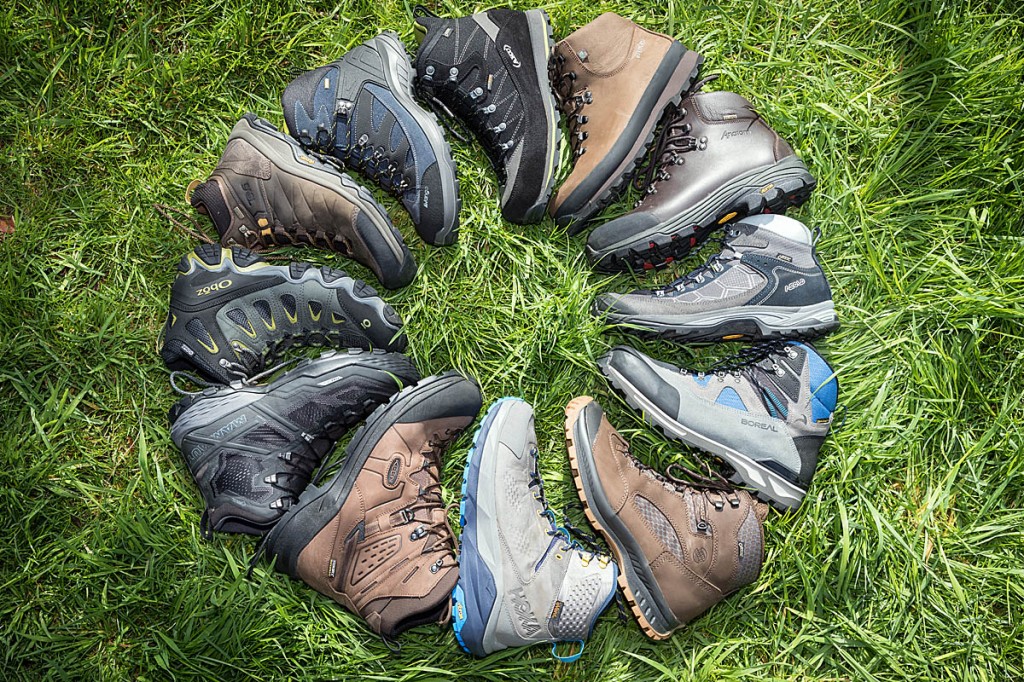
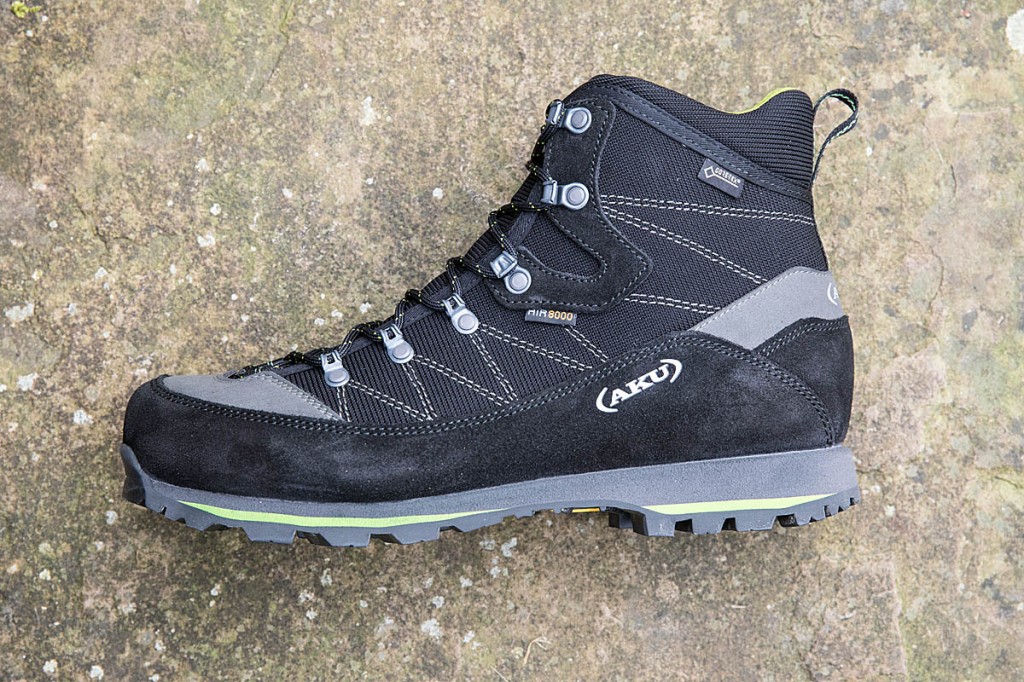

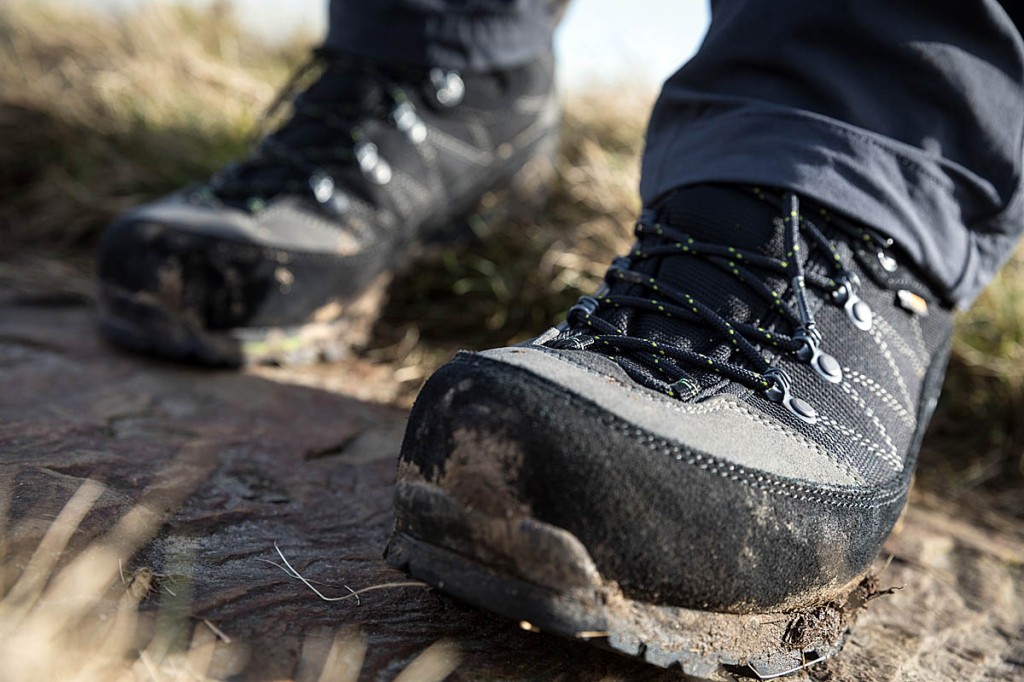
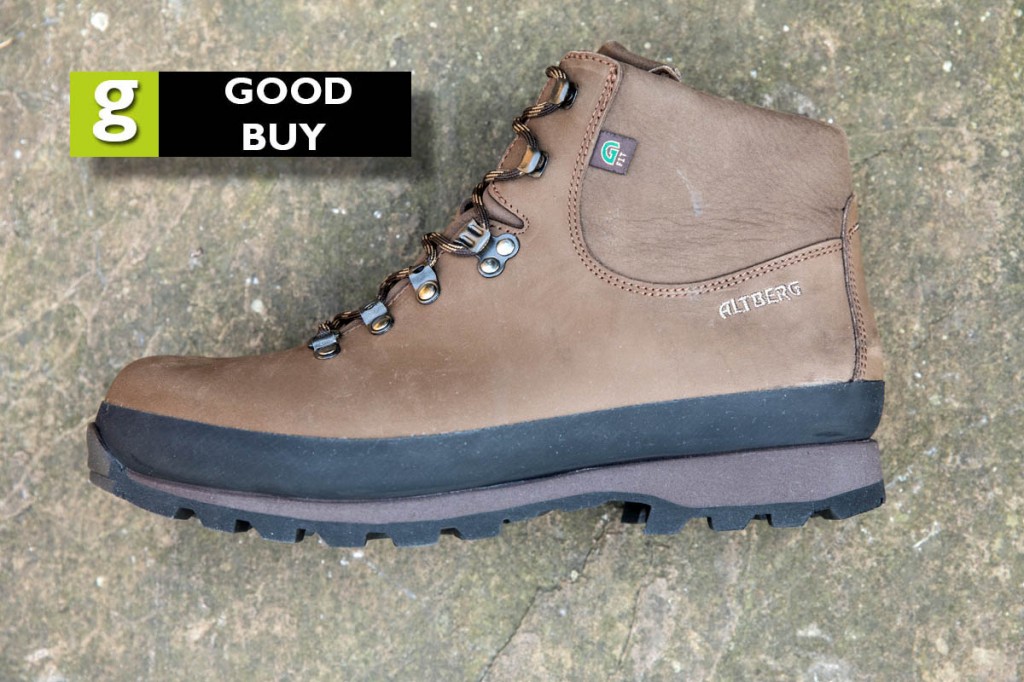
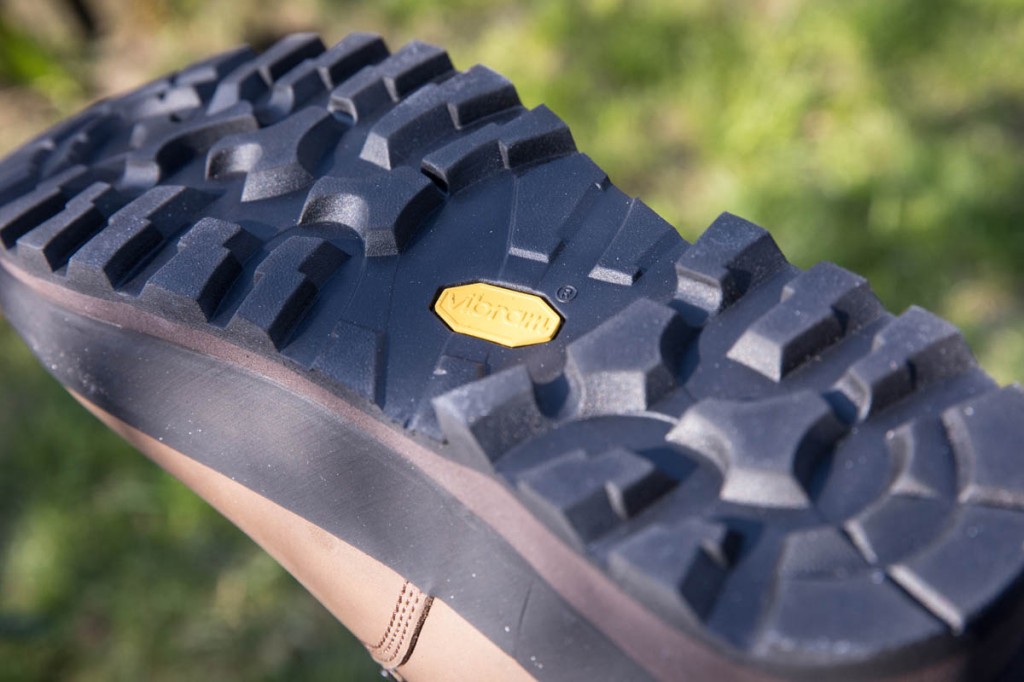
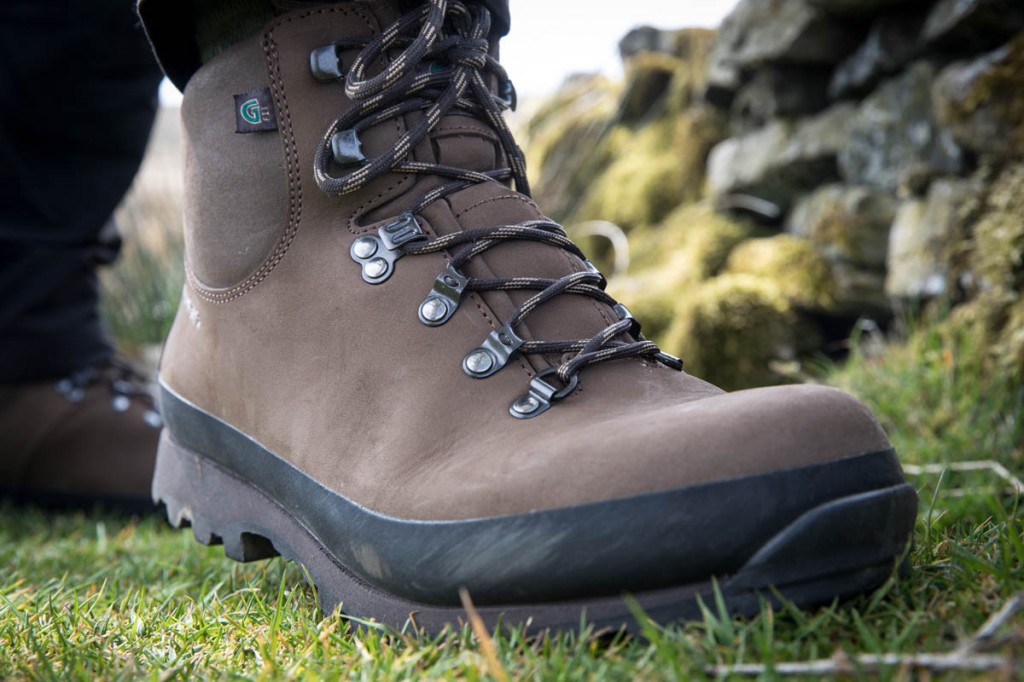
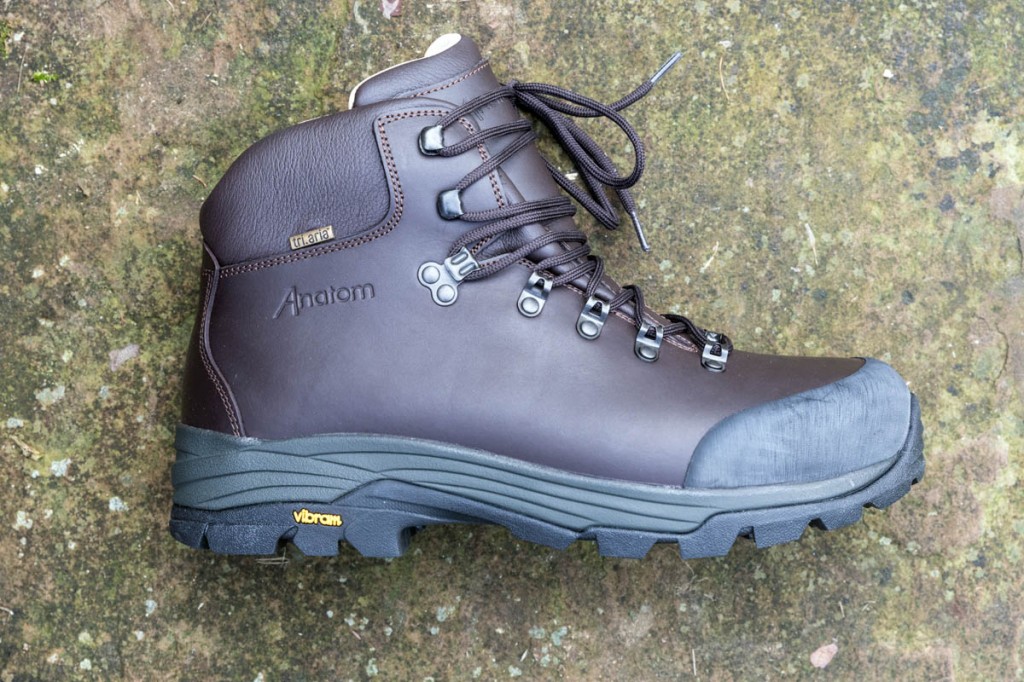
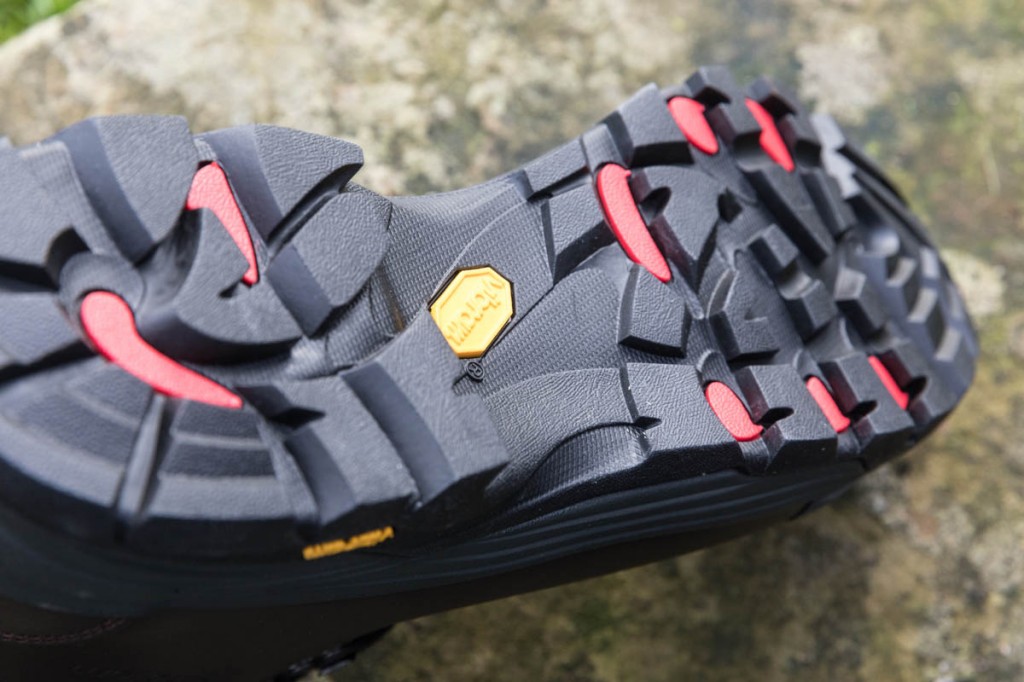
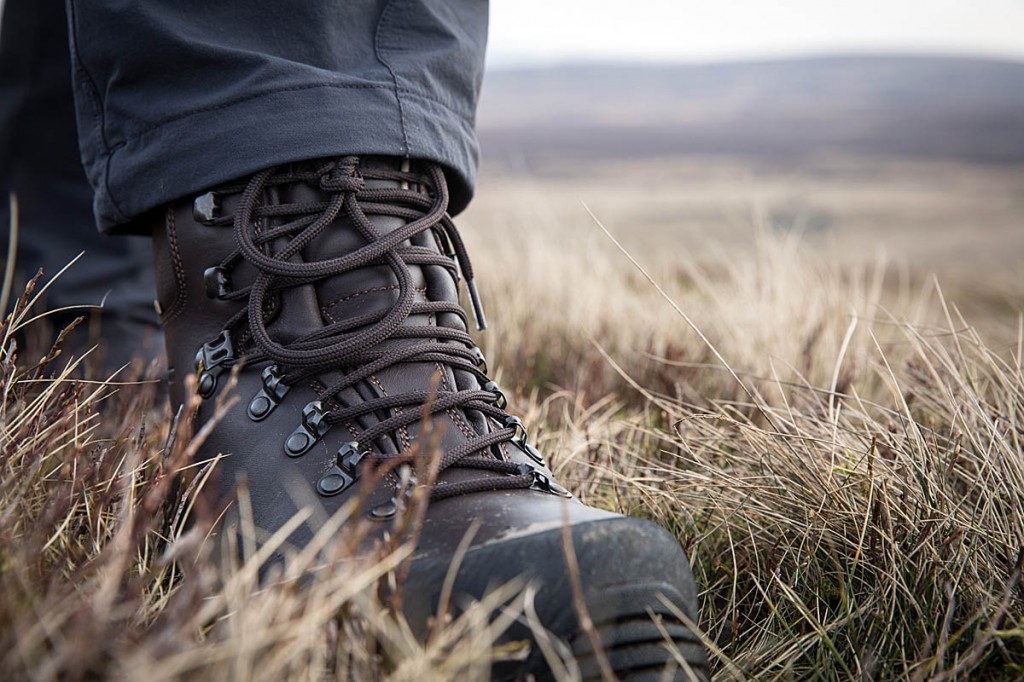
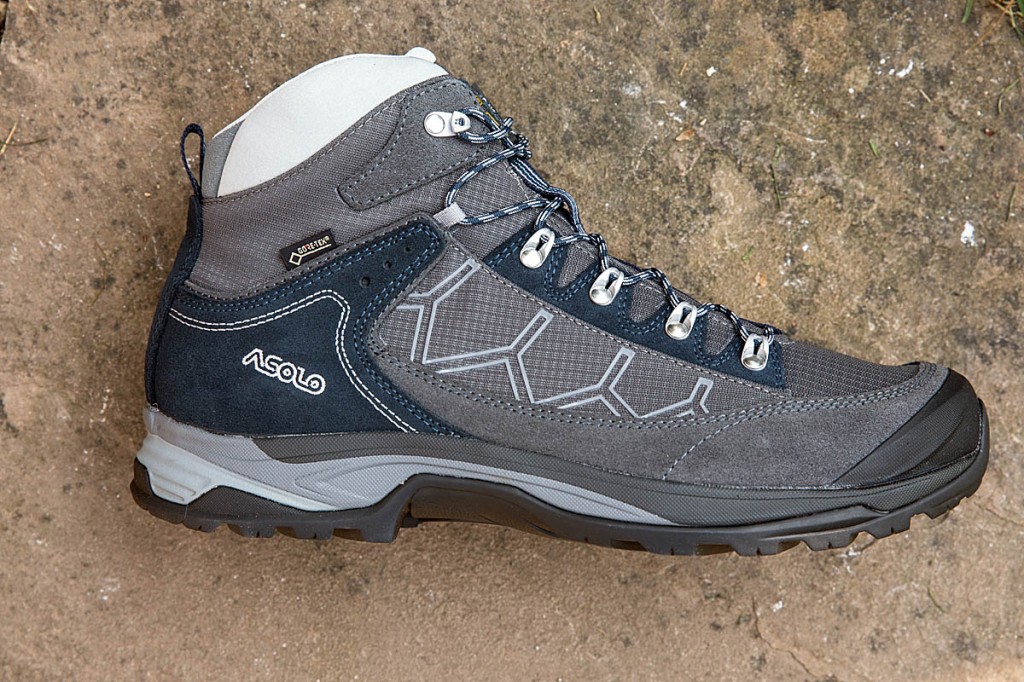
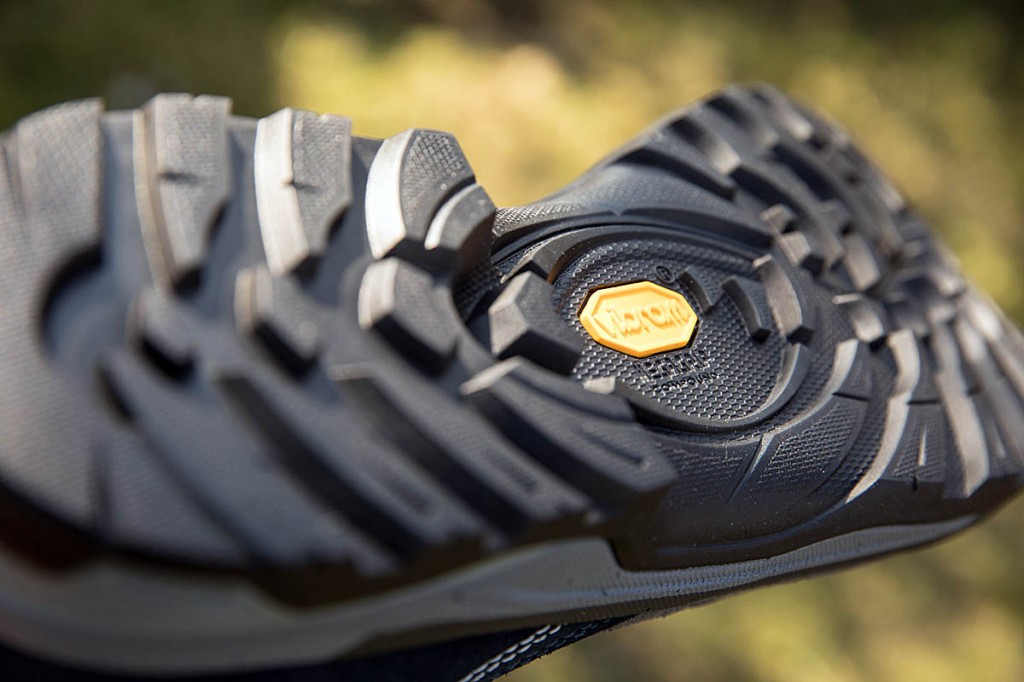
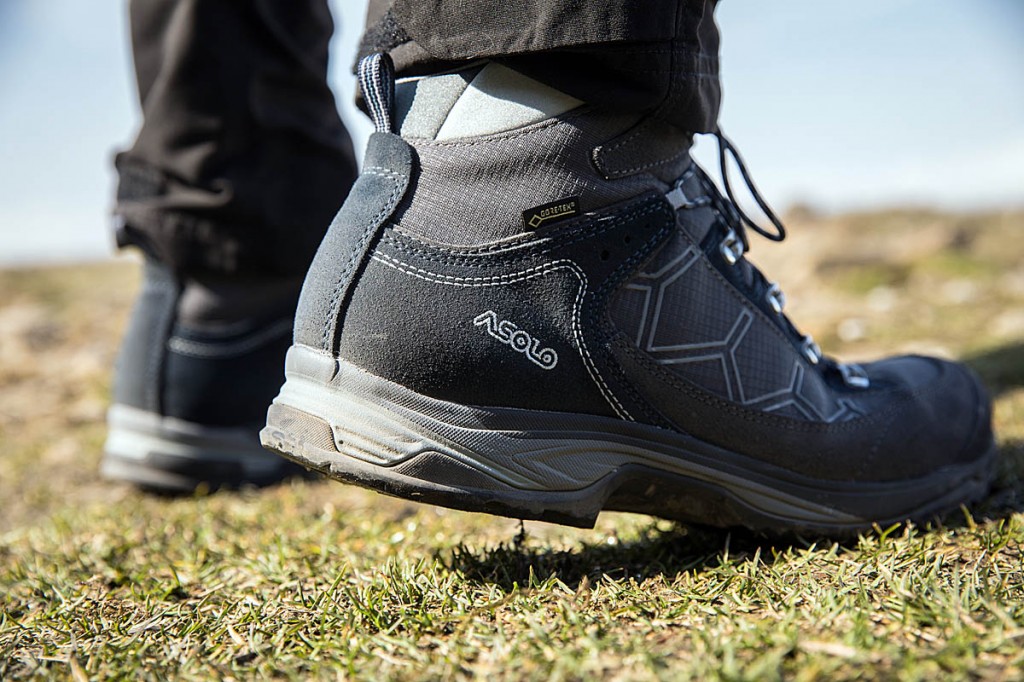
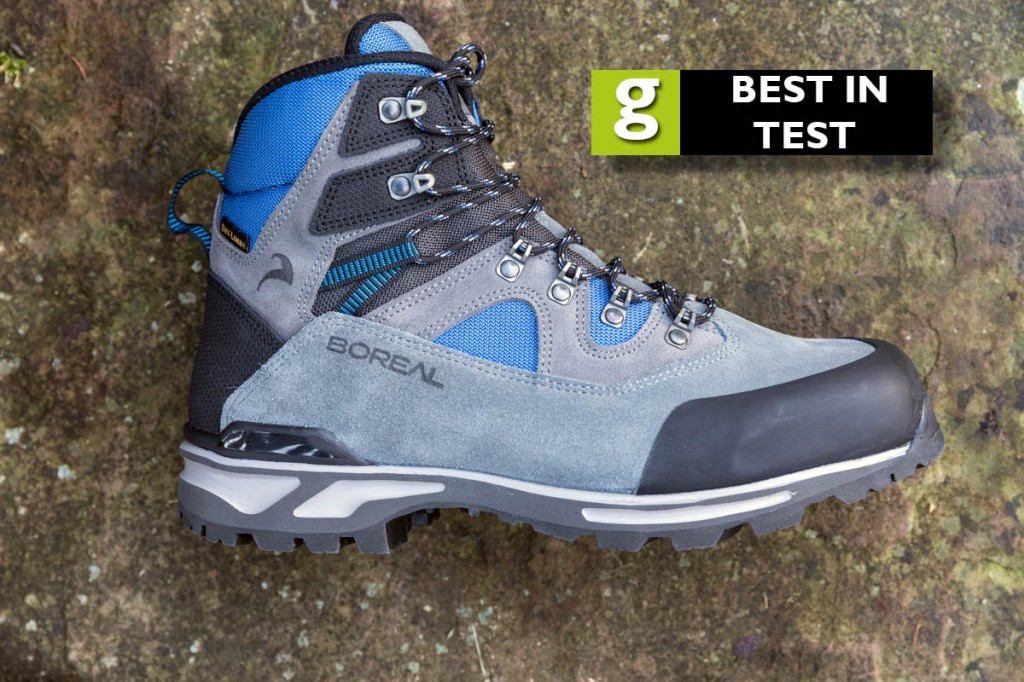
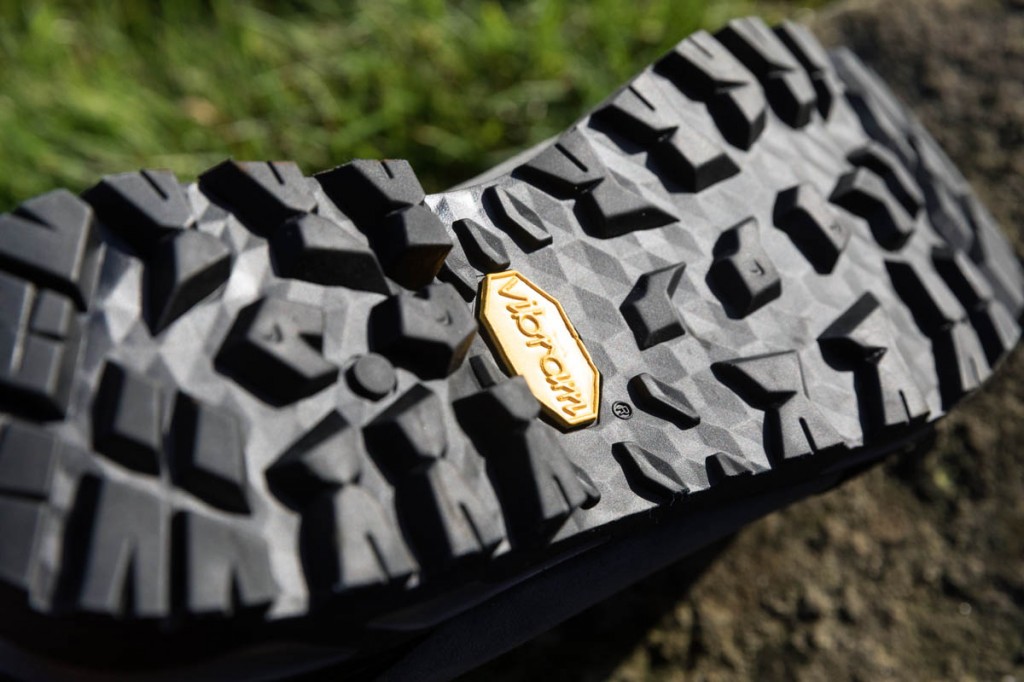
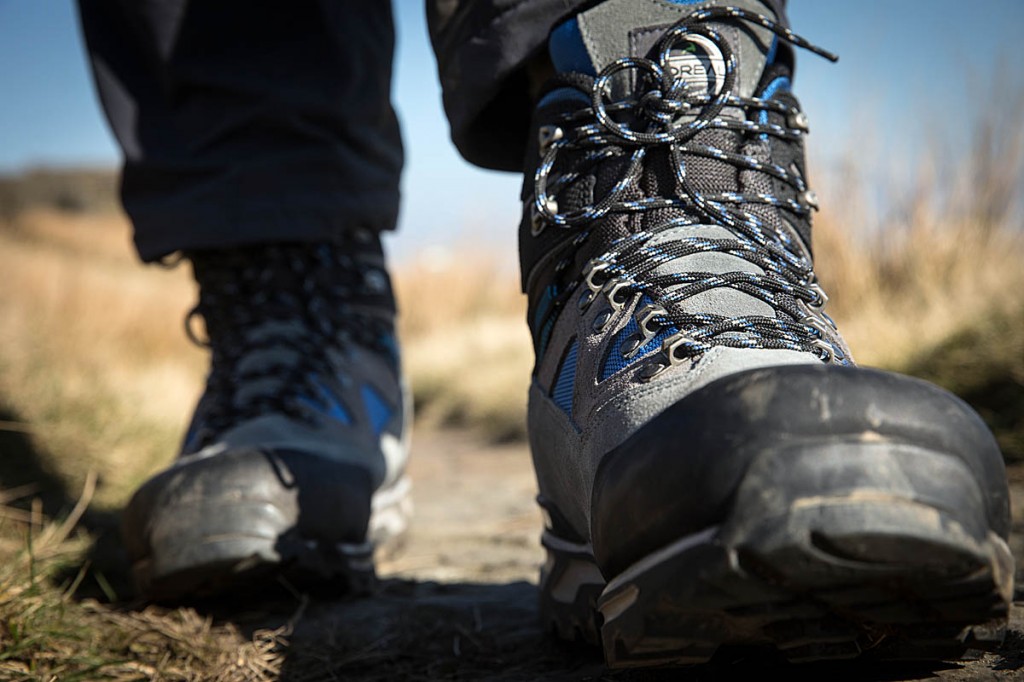
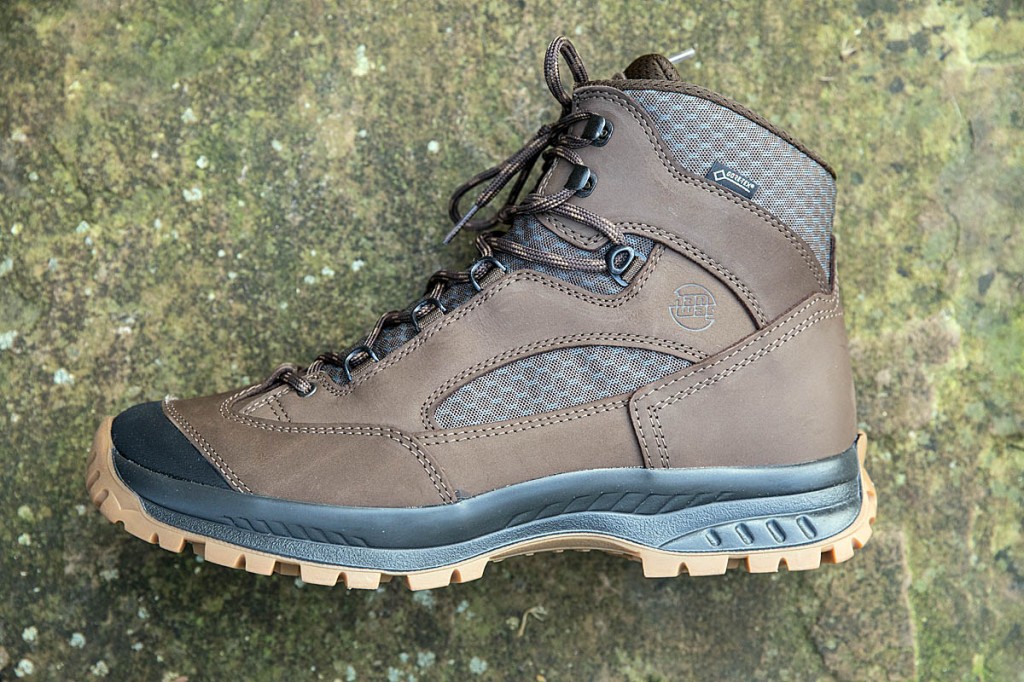
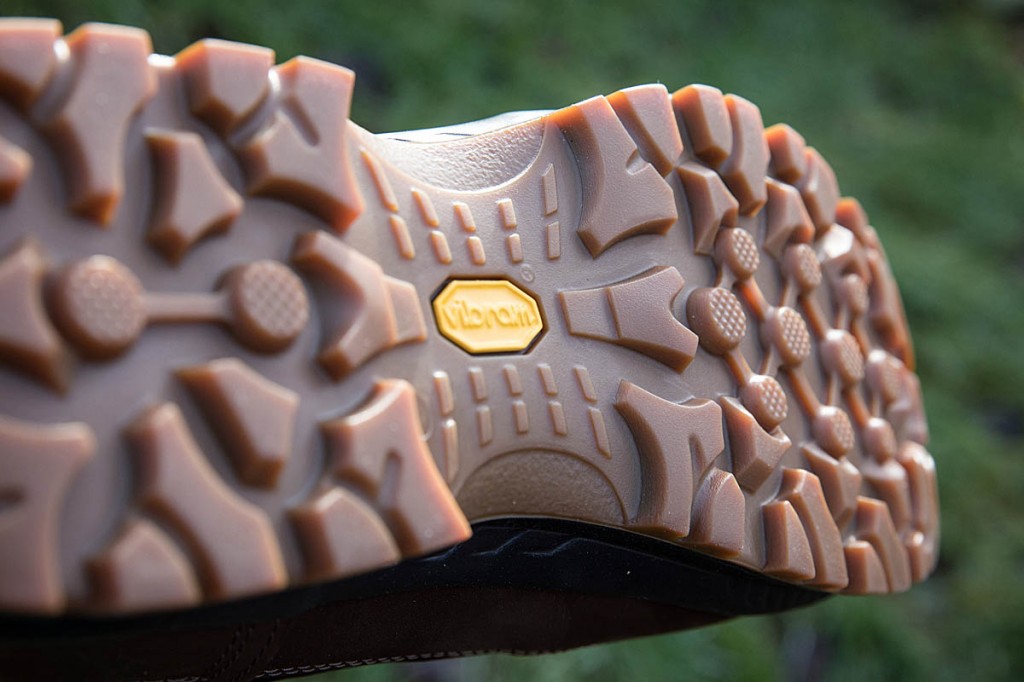
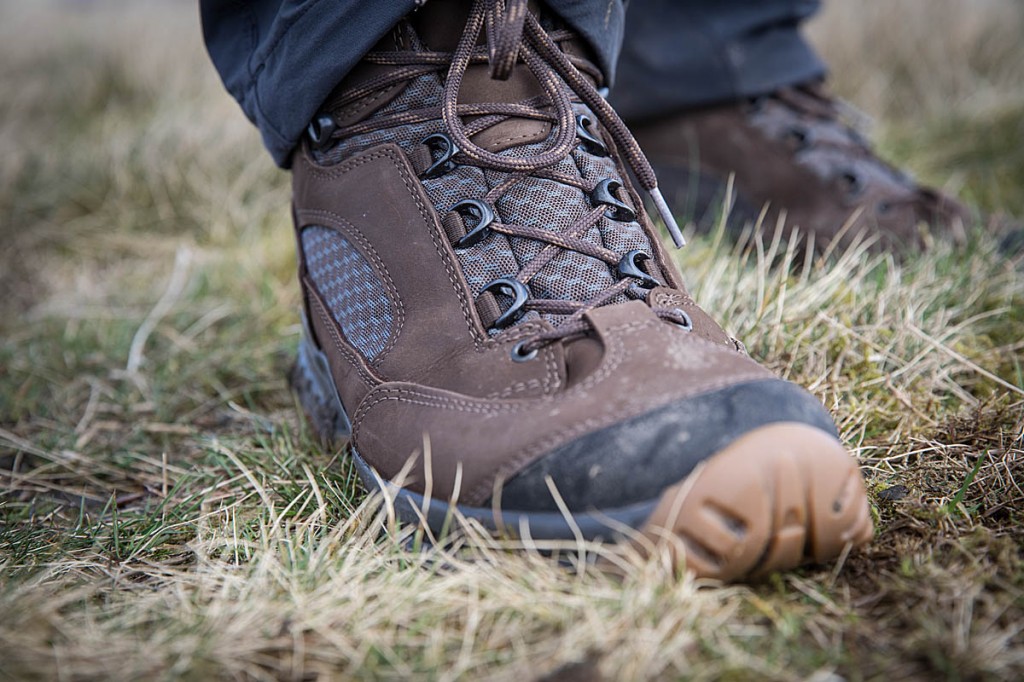
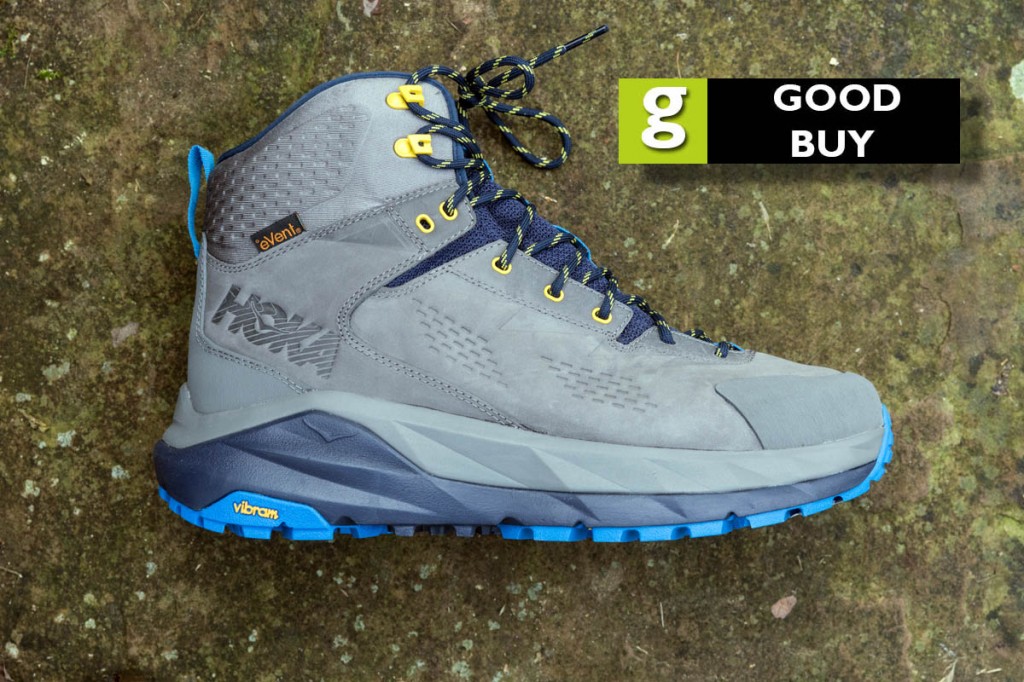
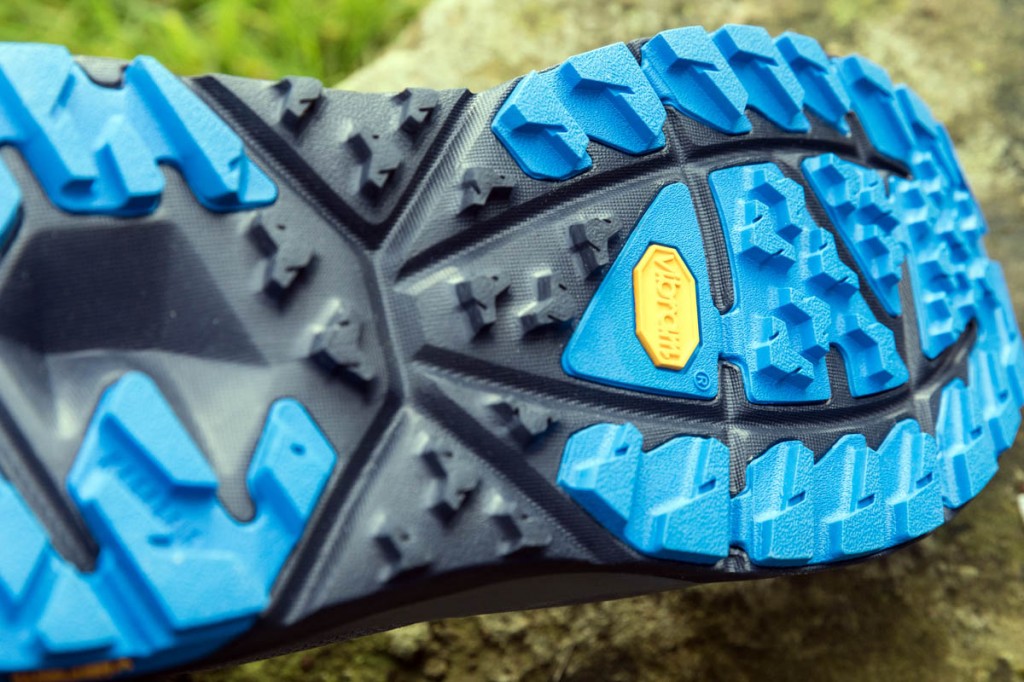
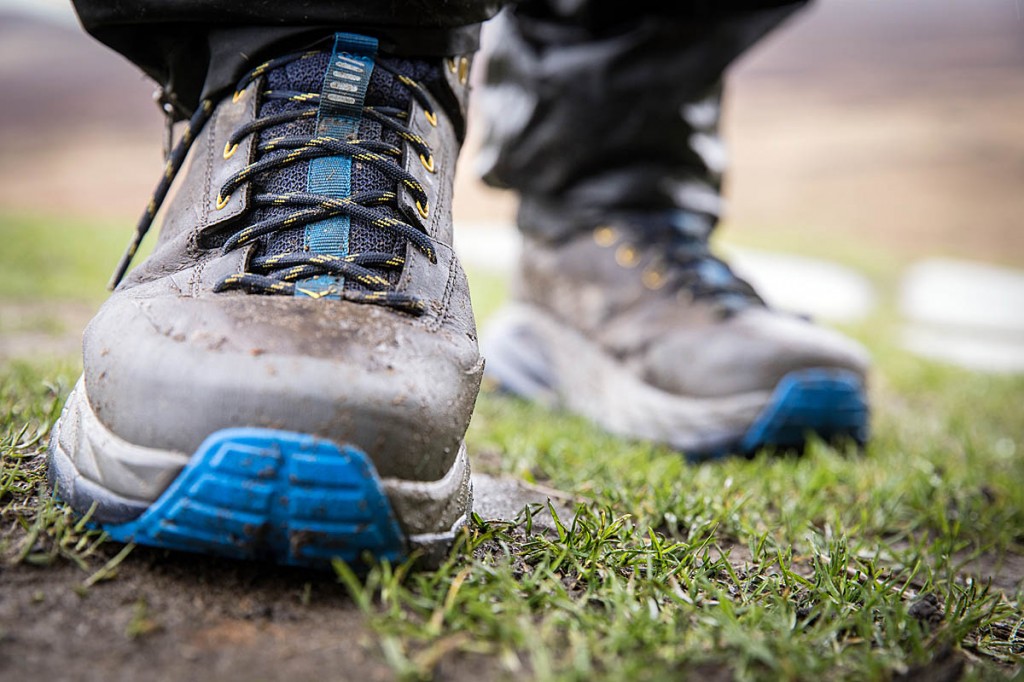
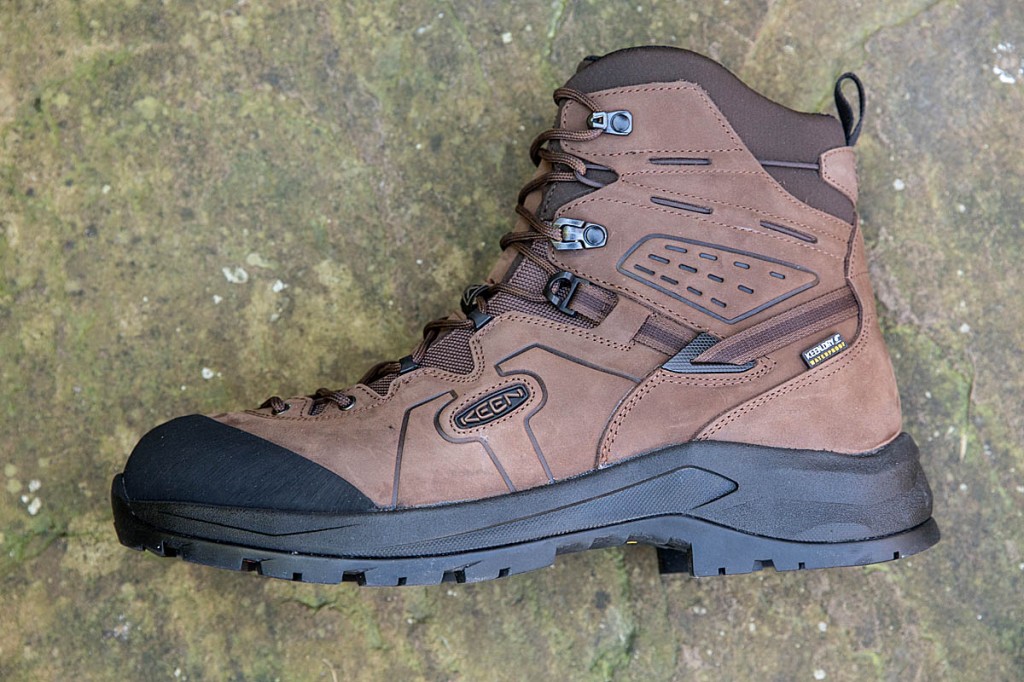
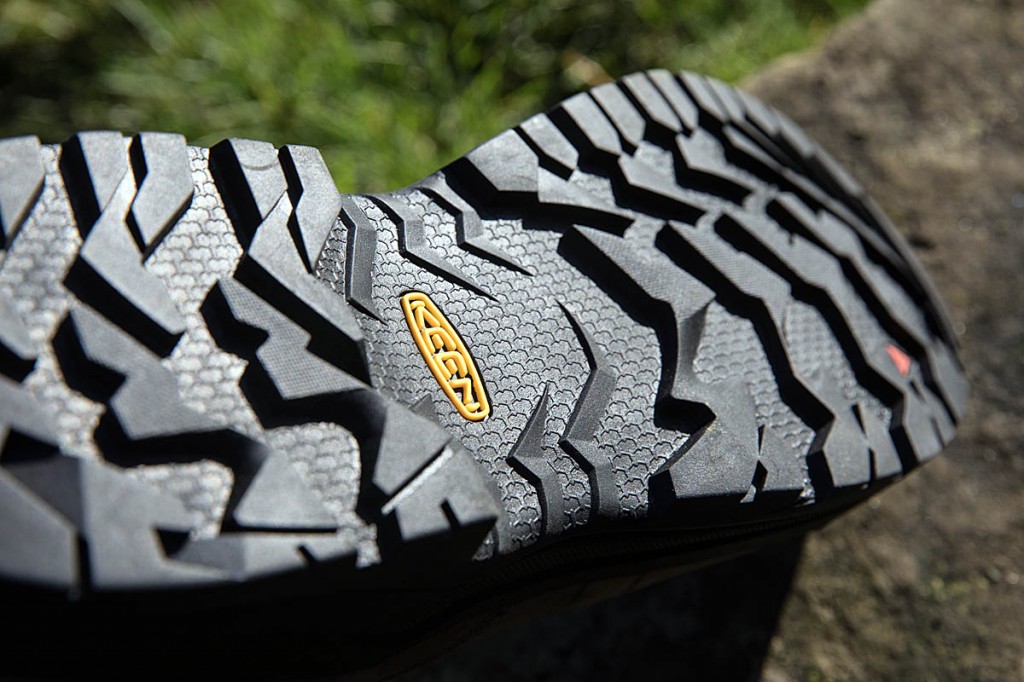
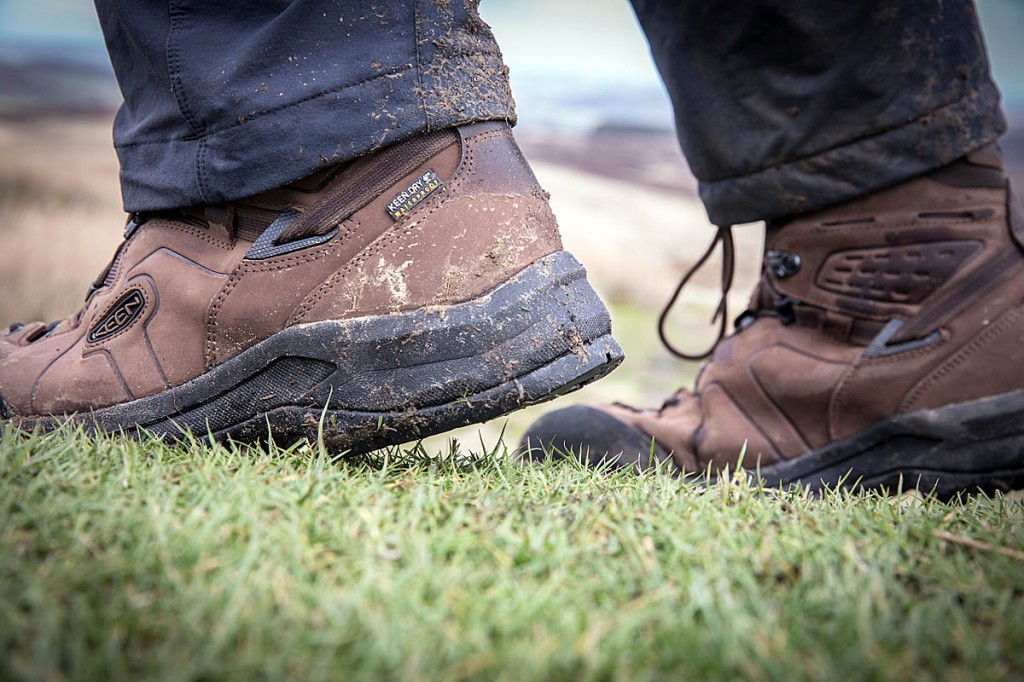
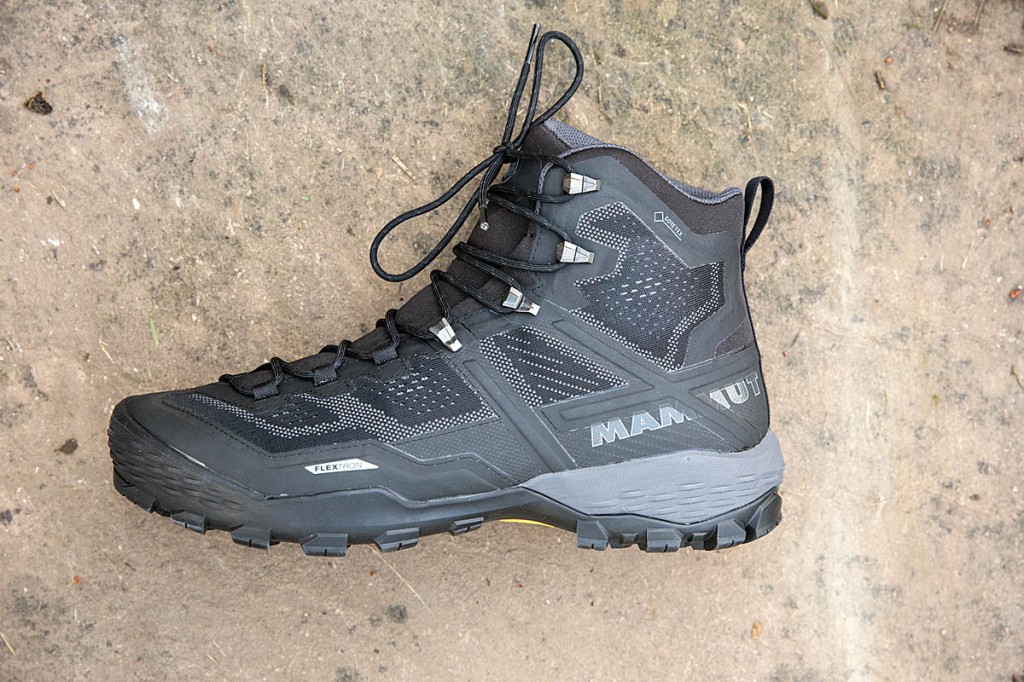
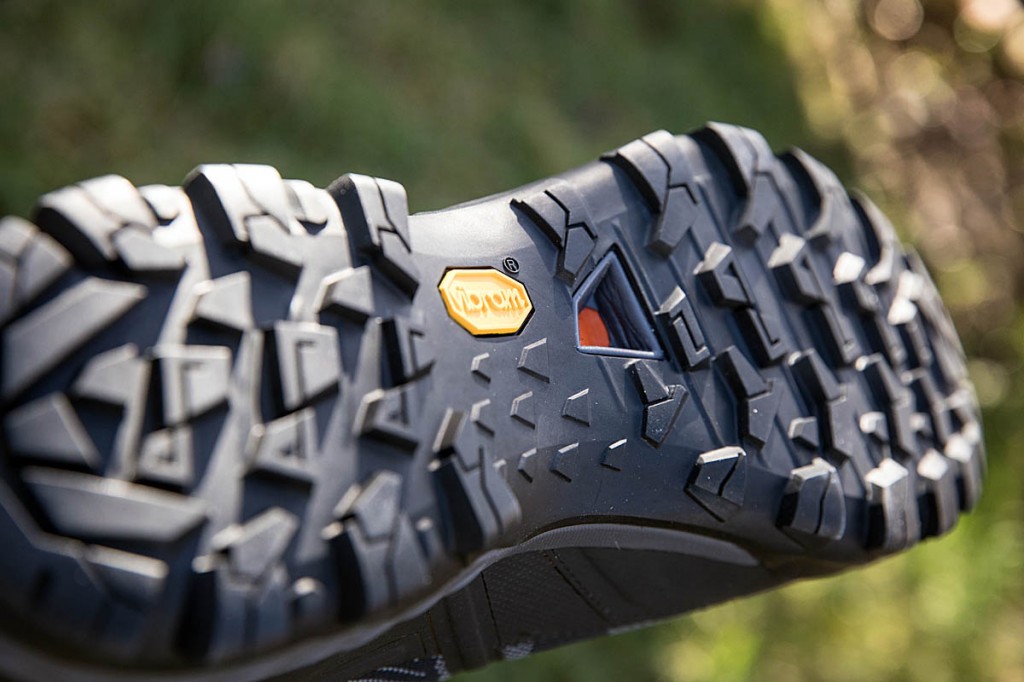
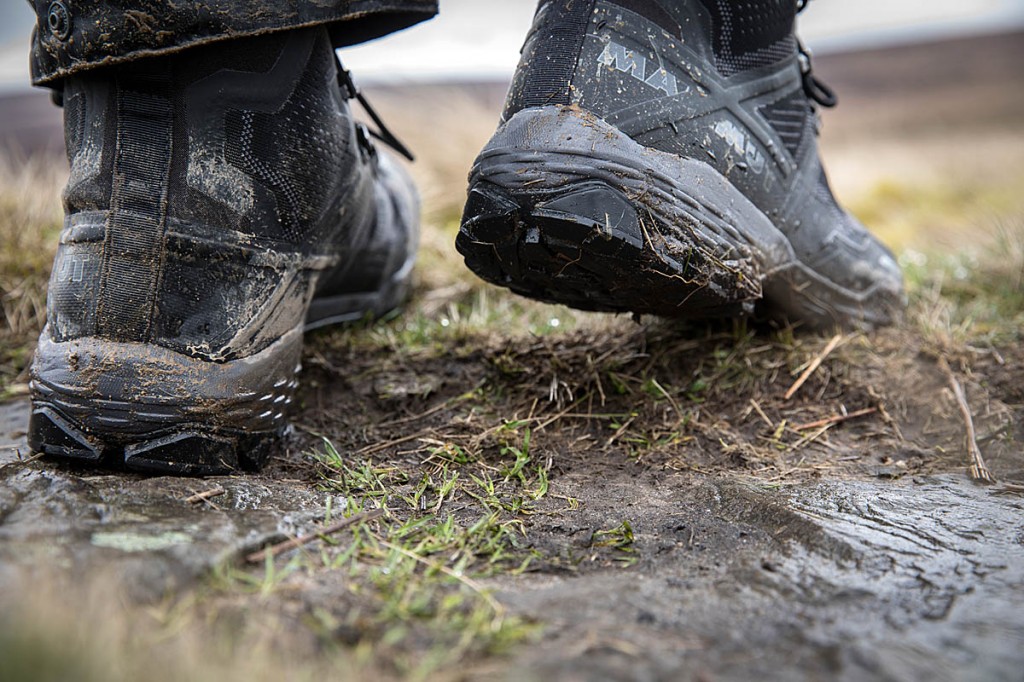
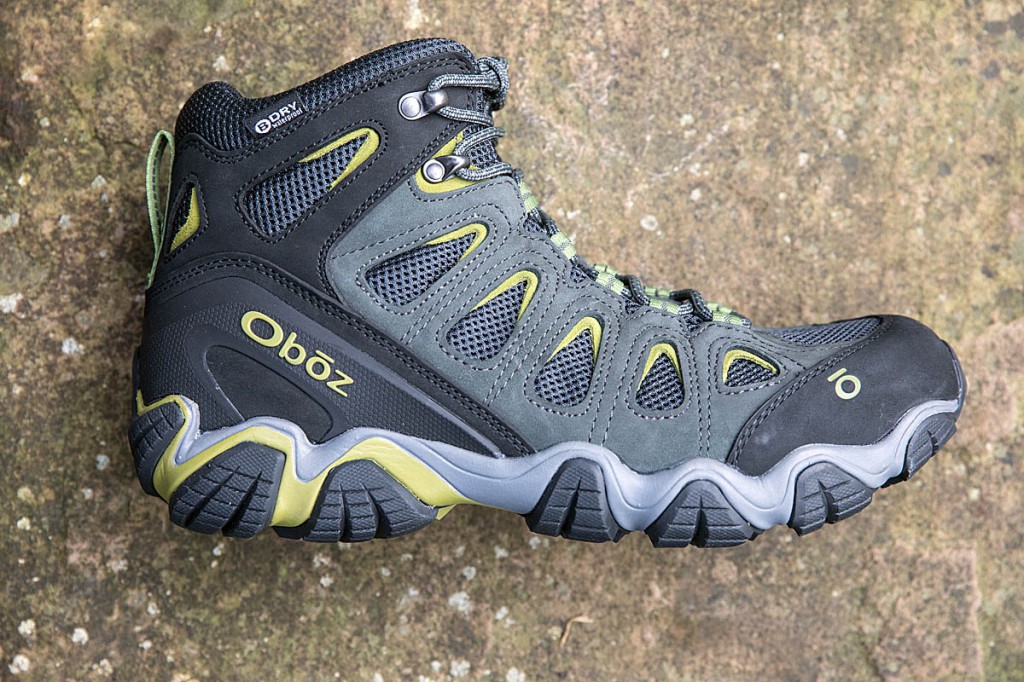
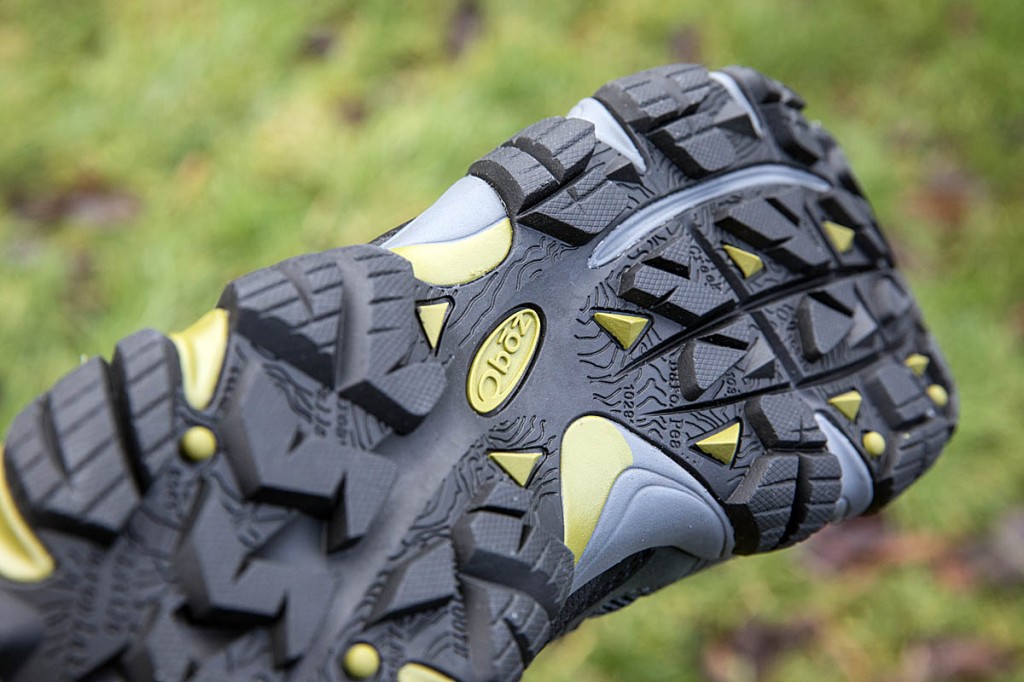
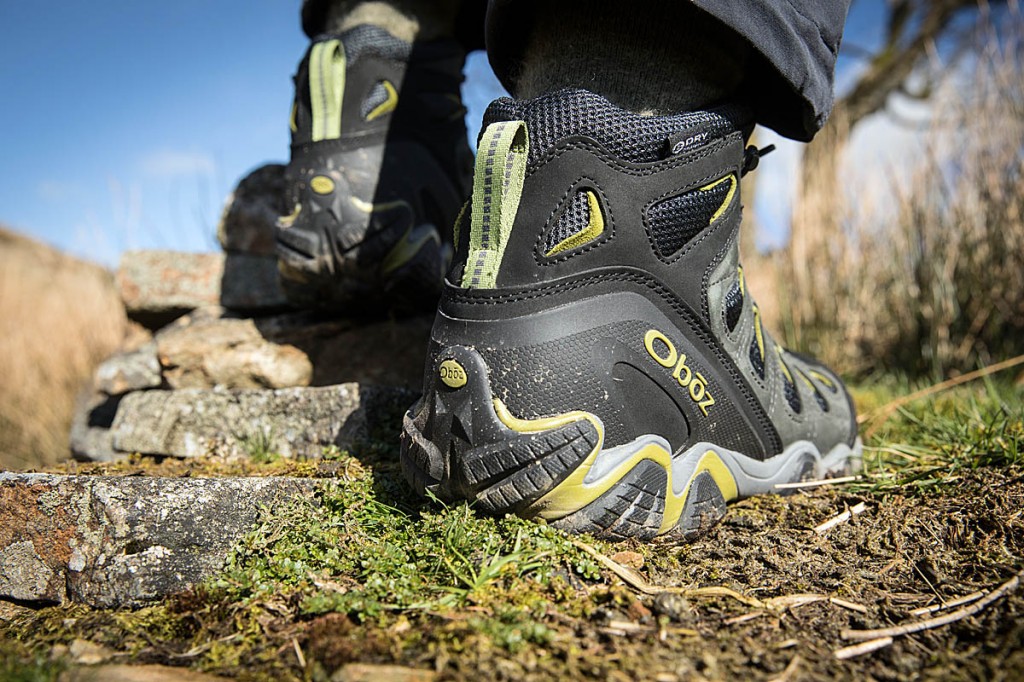
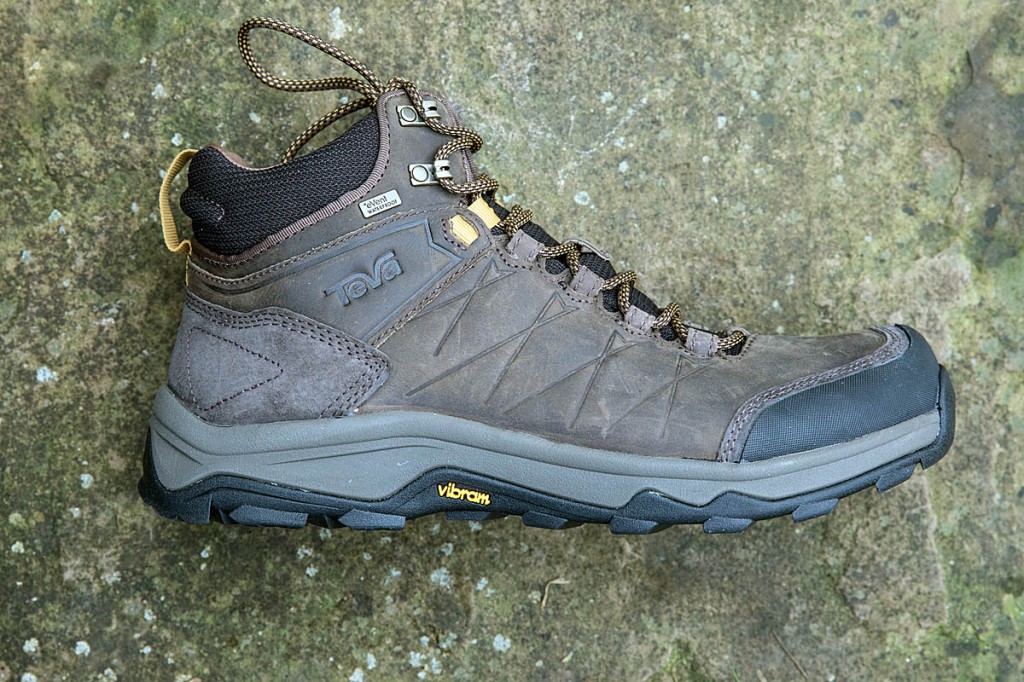
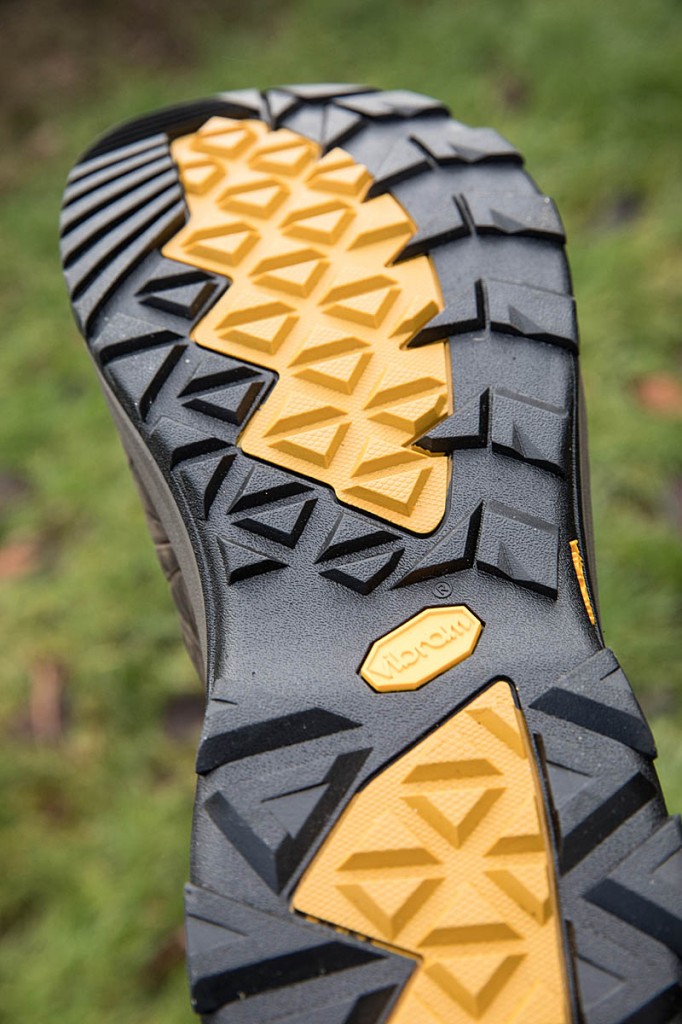
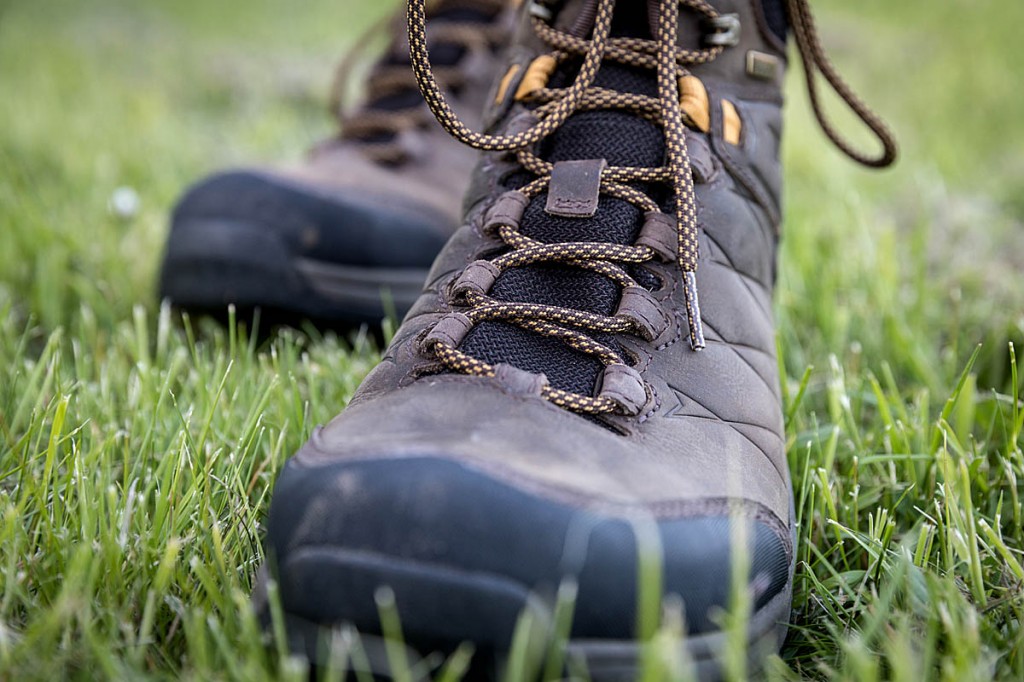
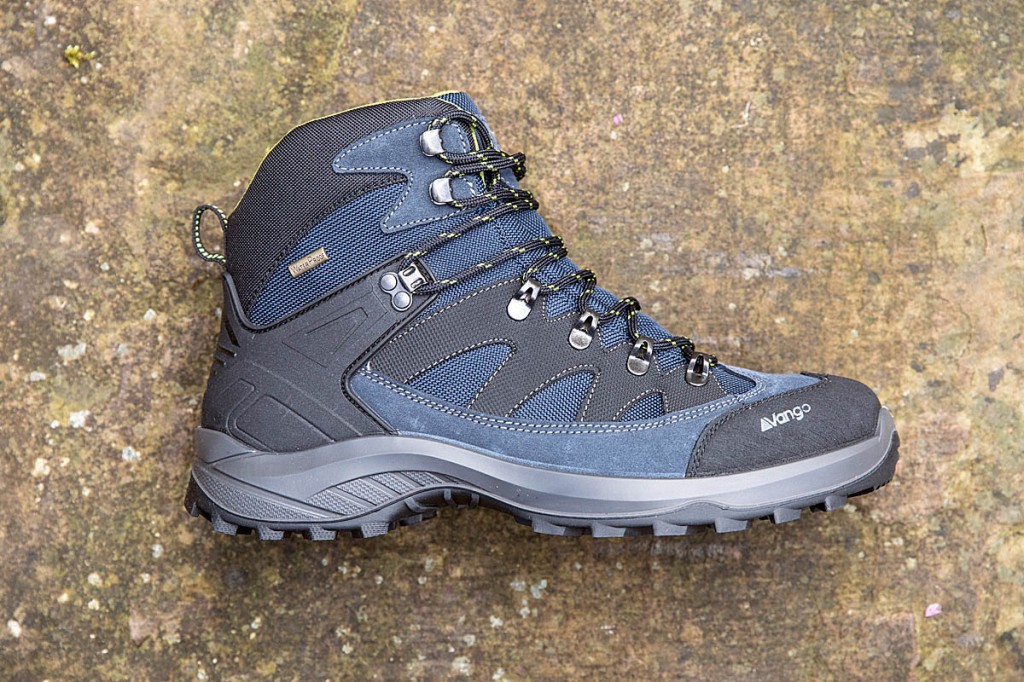
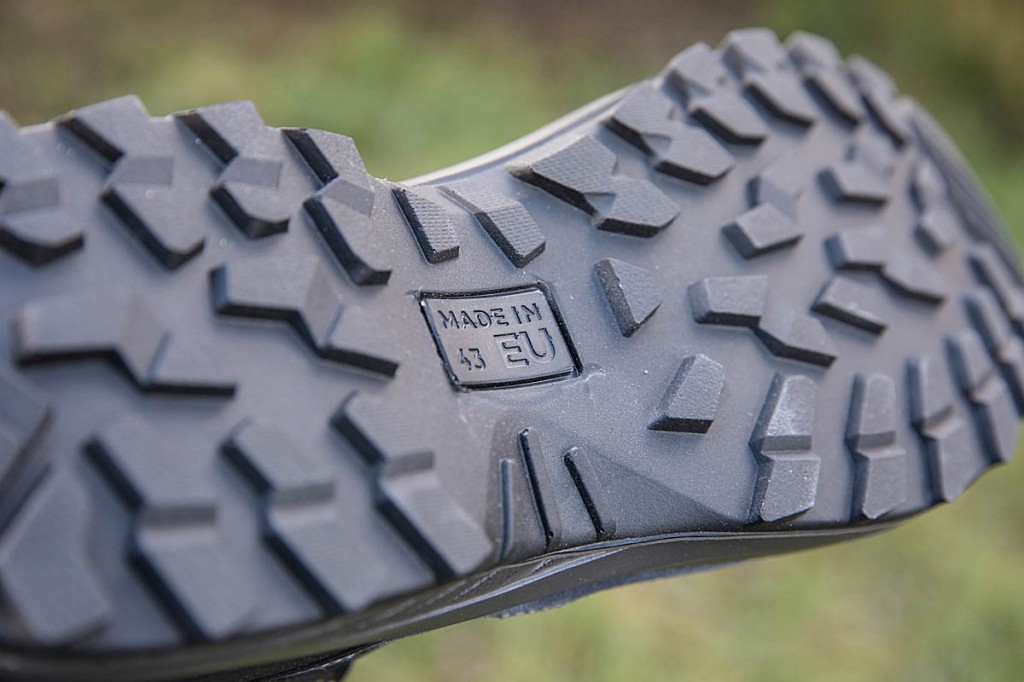
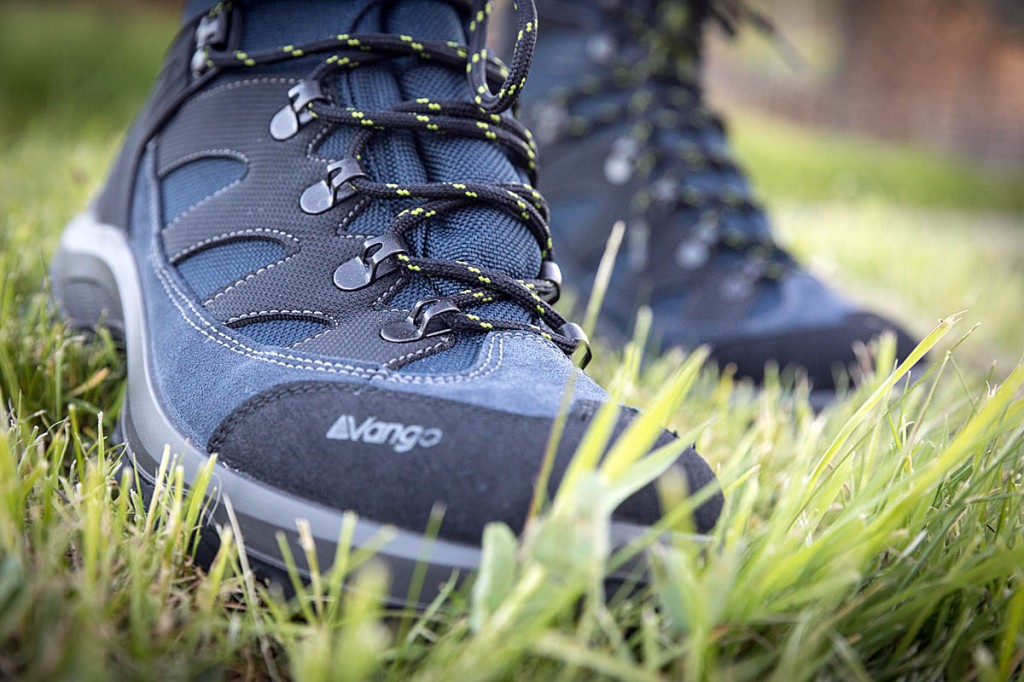
Jeff Breen
16 May 2019Fabric boots are generally not that durable. Multiple seams create points of weakness and goretex and other waterproof liners fail very quickly.
The best option is a leather boot with as few seams as possible, a good rand, and in my opinion no waterproof liners. My most waterproof boots have been leather boots proofed with something like nikwax.
Waterproof liners make for a very hot boot in summer conditions that can lead to blisters, they make the boot heavier and usually fail as the guarantee runs out.
A leather boot is far more robust than most fabric boots and usually good for at least one resole.